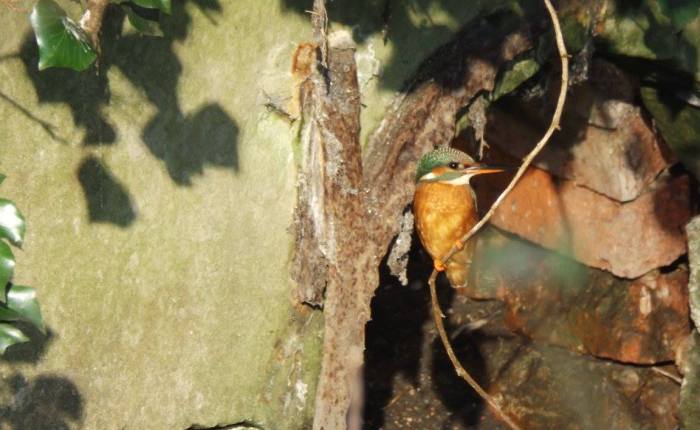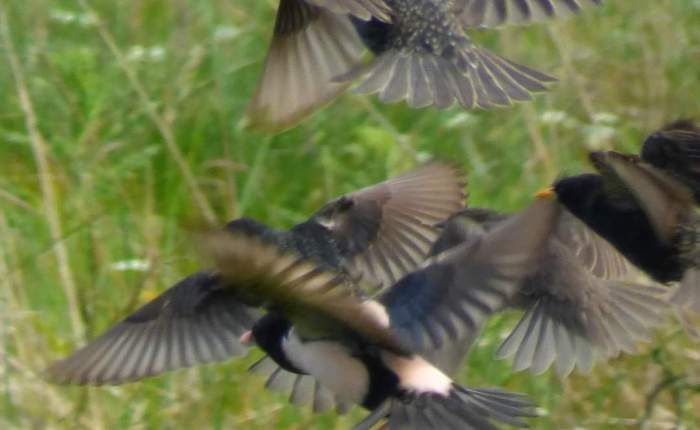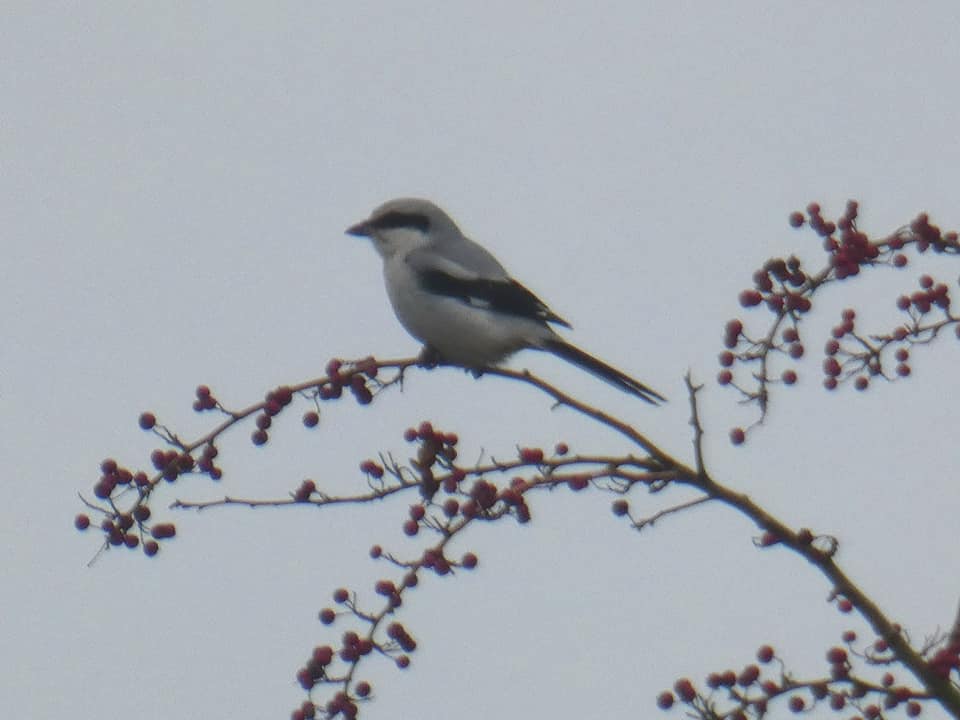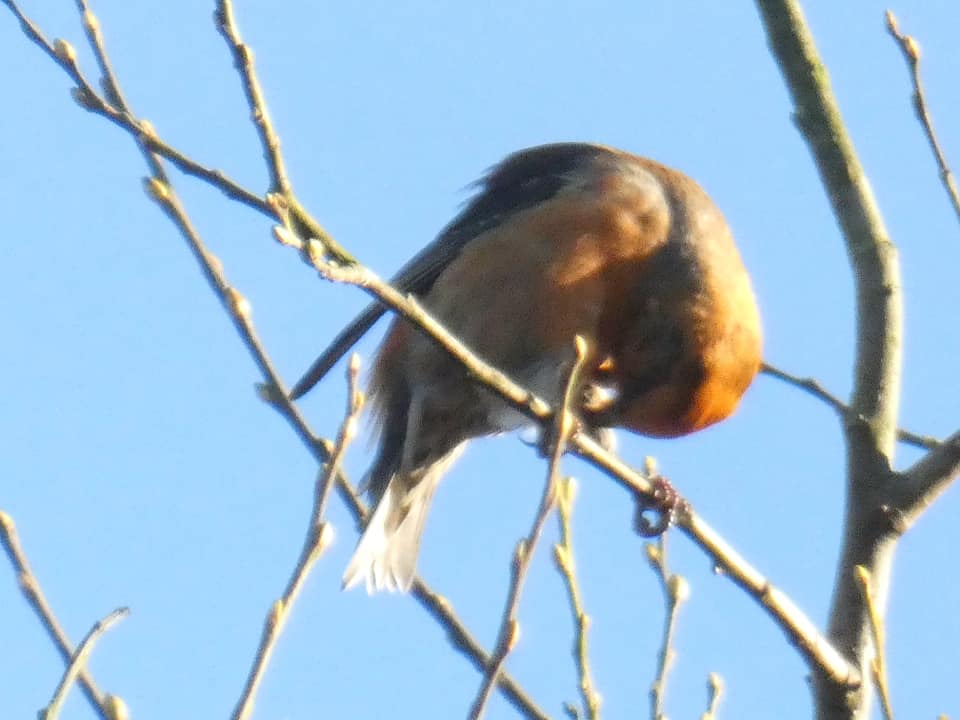We are Alison and Lee, and we love bird watching around Retford and beyond. We don’t have any fancy equipment: just binoculars and a basic 30x zoom camera. We don’t boast any rare sightings or go chasing around the country to spot something unusual; rather, we delight in the ordinary – the birds you can spot every day if you go out walking around your locality. We aim to encourage you to do just that. Often it’s just being in the right place at the right time – like this kingfisher who just happened to sit there while we were walking past! There’s so much amazing nature right on our doorsteps!
Coming up roses

Now summer is finally gone, we are reflecting on some of our best birding moments. The best for me was definitely the sighting of this rose-coloured starling at Flamborough.
We were standing in the lighthouse car park watching a flock of around 250 starlings, when I noticed that one of them looked to have a patch of white on it. Every so often the flock would fly up revealing a white flash. I turned to Lee and said, “you don’t think it could be a rosy starling do you?”

We decided it was indeed a rosy starling and a fellow birder a few feet away confirmed our suspicions. After a while, the flock took off out of sight. We decided to have a walk up the road past the old chalk lighthouse, and stopped outside a house on the main road. I said, “wouldn’t it be good if it landed on the roof of that house?” Minutes later, much to my surprise, it did! We had around 20 minutes of it sitting there posing for us before others arrived to see this beautiful bird.

What an amazing moment! It was the first time we’d ever seen one of these birds, and to find it ourselves was really special.

What a stunning bird!
Sun, sea and celebrities!
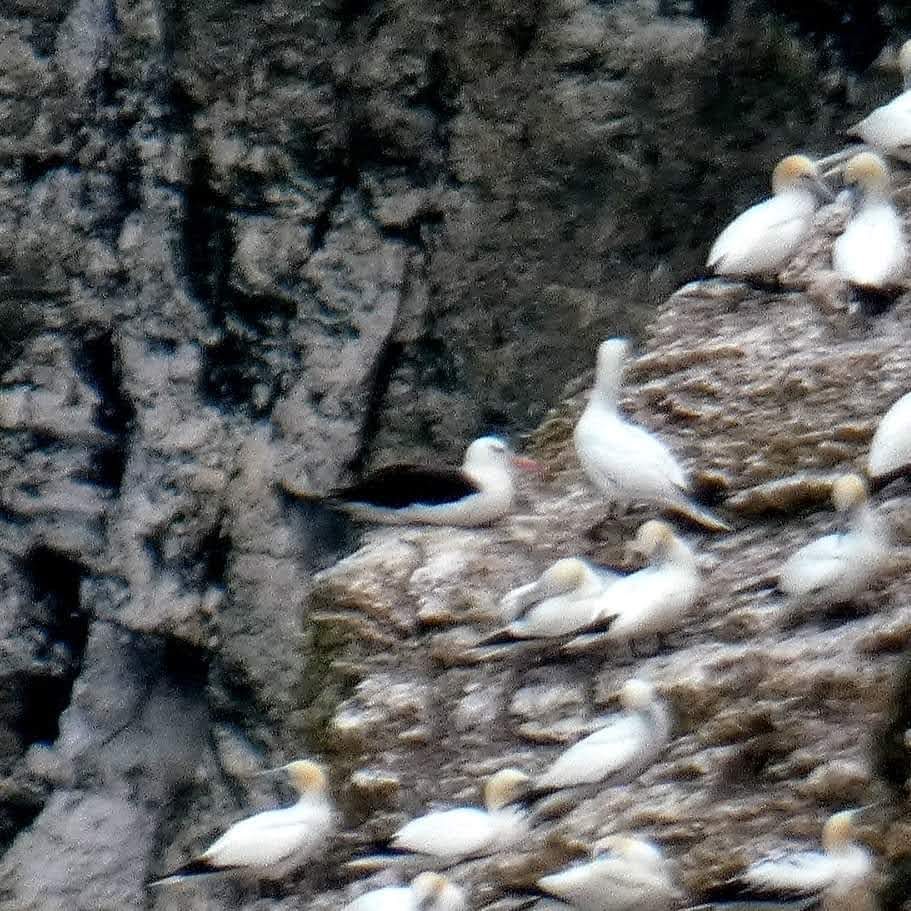
Yes, celebrities! We first met Albert, the black-browed albatross, in early July, not long after he first made an appearance at Bempton Cliffs. As you can see from the photograph, our sighting was quite a distance away, but we were honoured to meet a bird we would never usually see in the UK (or even the northern hemisphere!). We saw him again on his 70th day at Bempton, sitting on the cliffs with the gannets. Unfortunately, we haven’t yet seen him in flight but maybe he will hang around for a while yet!

The next famous bird we saw was the white-tailed lapwing/plover (above) at RSPB Blacktoft Sands. This bird is a native of the Middle East, so again very rare for this location. We had the joy of watching this bird for quite some time, and also managed to spot some bearded tits in the distance – a first for us!
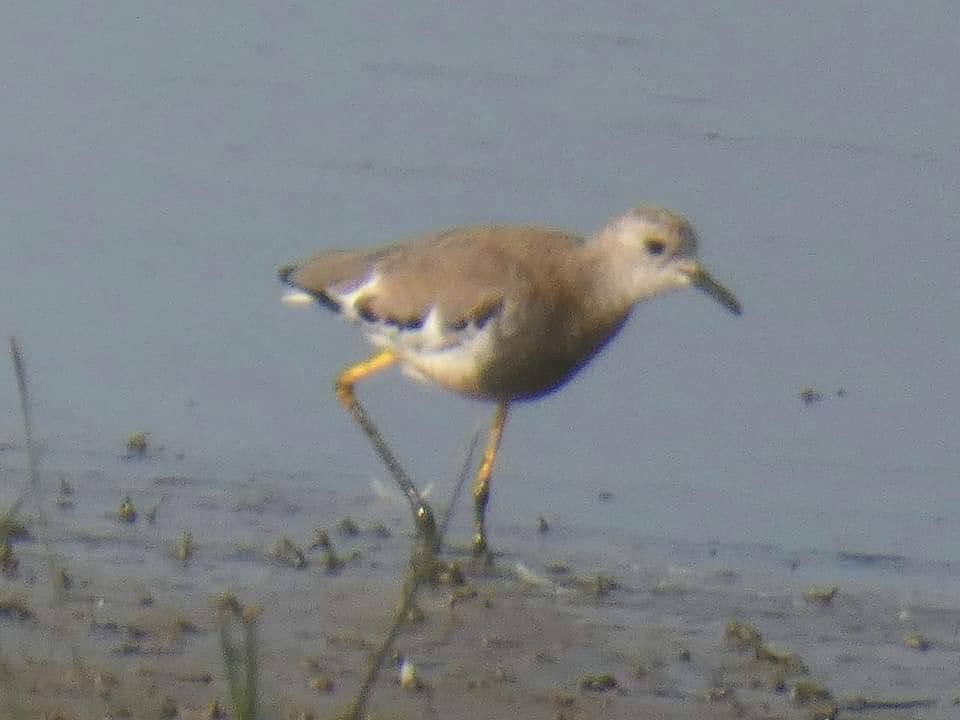
Throughout the summer we’ve seen some other great birds apart from these two celebrities. The puffins at Bempton never fail to delight, and this year was no exception.


We also managed to get up close and personal with a guillemot, which we found on the beach at Barmston. The poor thing was washed up looking very waterlogged, so we contacted Whitby Wildlife Sanctuary, who took the bird in and made sure it was able to fend for itself before releasing back into the wild.

Although it was a sad situation, it was a great opportunity to see such a bird close-up, rather than feet away on a cliff. After this incident, we decided to raise money for the sanctuary by selling pots of stones and shells we found on the beach to our friends both at home and on the caravan site.

As summer draws to a close, many of our migrant birds head to the coast ready to make their journeys across the world. Last weekend we were overjoyed to find around four pied flycatchers at Flamborough. These are birds we don’t often encounter, so to have four of them in the same place and to be able to watch them catching flies and returning to the branches was amazing.
All in all, we’ve had a fantastic birding summer! We’ll leave you with this spotted flycatcher we found in our woods back home:
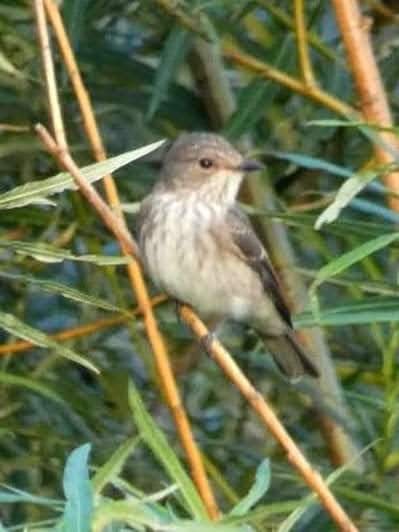
Round up of rarities ’round Retford

2020 has been a difficult year for lots of us, but many have found solace in nature and spending time outdoors. We have tried to get out as much as possible, and have been rewarded with some great birding sightings without going too far afield. This post highlights some less common birds we’ve been able to spot this year, mostly in Retford or not too far away.
Firstly, the waxwings. We wrote about these earlier this year in a previous post (https://featheredfriendsthroughthelens.wordpress.com/2020/01/26/waxwing-wonders/) – we were delighted to be able to watch them feeding in the trees on a main road in Retford.
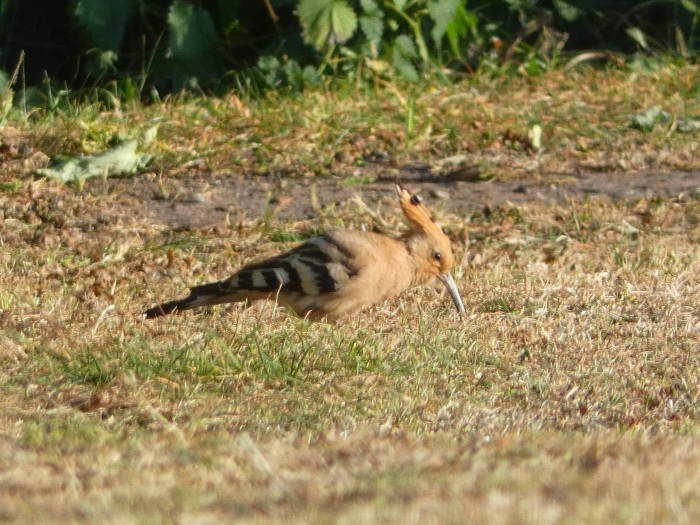
Our next highlight was this exotic-looking hoopoe (https://featheredfriendsthroughthelens.wordpress.com/2020/05/25/hello-hoopoe/) which turned up in a playing field in Ordsall, just minutes from our home. We had the joy of watching it picking up insects from the grass – it didn’t seem to be bothered by all the attention it was attracting.
We managed a few visits to Clumber Park during the spring, and had the privilege of watching this young family of redstarts grow. These birds are not terribly rare, but also not a common bird that you would see every day. The first picture is the female and the second two images are one of the young we saw on a few occasions when visiting the park. I love the second photo where the young bird is showing off its lovely red tail feathers!

Lee also spotted this lovely woodlark at Clumber Park, not too far from the redstart family. Here it is in full song.
As most of our readers know, we have a caravan on the East Coast of Yorkshire, where we love to visit and spot the various birds that can be found there. Our visits this year have been limited, but when we were able to go, we found this beautiful red-breasted flycatcher at Flamborough. This European flycatcher doesn’t often show up in the UK, so it attracted some interest. While we were watching it flitting around, we saw another bird land a little lower down in the bushes. It was a little bunting! Another rare spot that we hadn’t seen before.

Two exciting spots in one afternoon – amazing!
Less rare, but spotted flycatchers are always a delight to watch. We found a family of them at Clumber Park, and watched them flitting around catching food for their young for quite some time. They didn’t seem to mind being fairly close to people so we had some good views of their activities.
Lee’s next exciting spot was the great grey shrike that appeared at Cottam Power Station. Unfortunately, I didn’t get to see this one as every time we went together it didn’t show! These amazing birds are rarely seen in the UK, where some arrive and spend the autumn and winter. Interestingly, they store food in ‘larders’, where they impale their prey!
Our final highlight of 2020 was the flock of crossbills at Budby Forest. We had never seen these birds before, so were delighted when a flock of them showed up on several occasions, in the tree tops and on the ground at Budby Forest. As you could guess from their name, they have a crossed bill, which they use to extract seeds from pine cones. The males and female are easy to distinguish, as the males are red while the females are green. We got more than we bargained for on one of our visits here – a pair of naked ramblers and a parking fine! Still – a great end to our birding year!
Thank you for reading – and we wish you all a very Happy and healthy New Year! May we all continue to find joy in nature.
Hello, hoopoe!
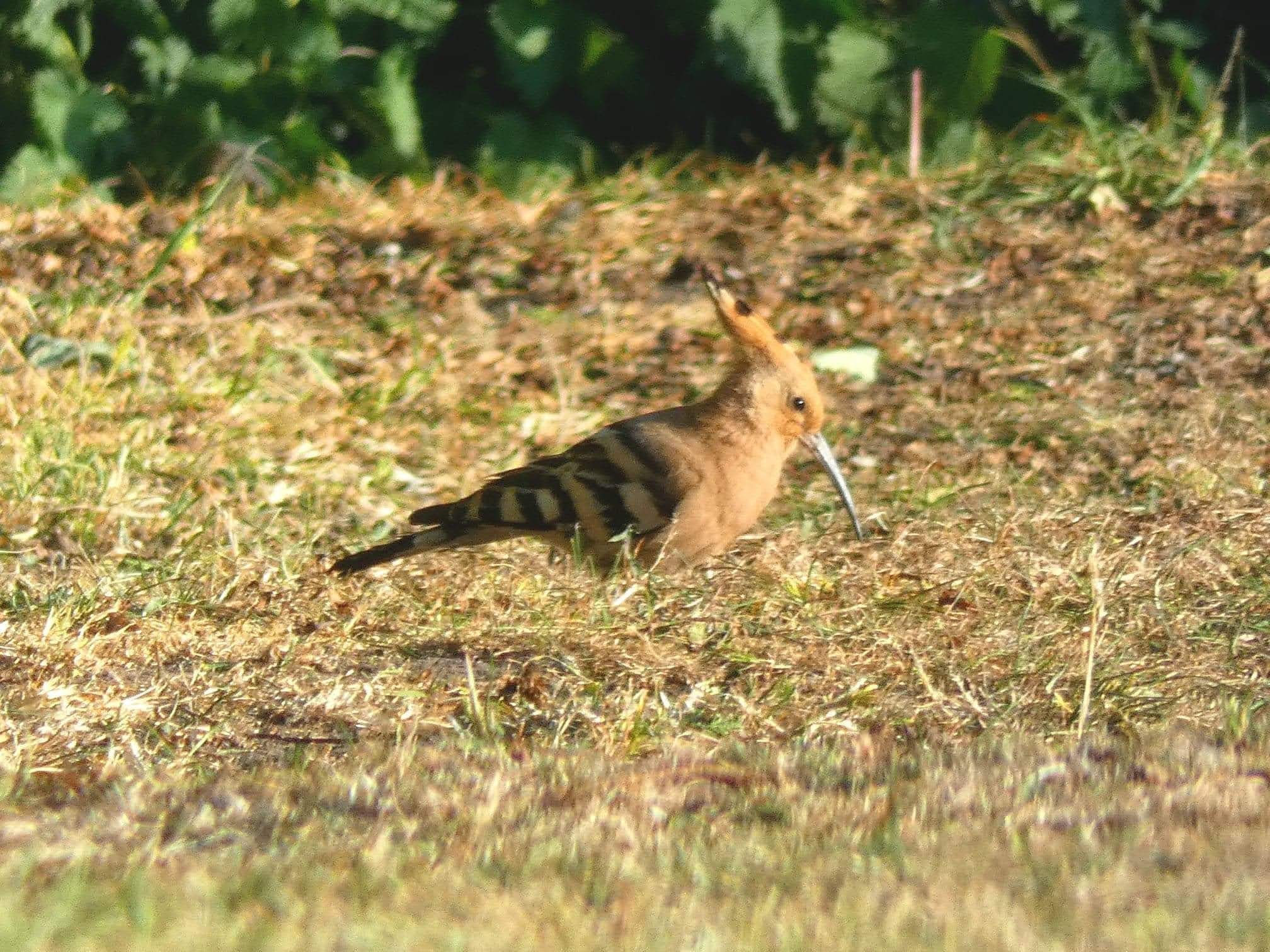
Yesterday afternoon we went for a walk in our local park to feed the squirrels, as they’re pretty tame there.
While we were out, Lee got a message to say that there was a hoopoe back in our home town on a local field. Wow! We were surprised as we’d never seen one before.
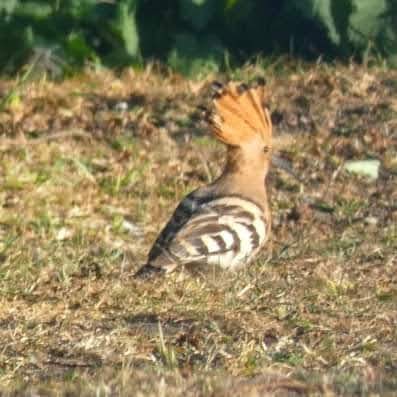
These exotic birds are normally found on the continent, in countries such as Spain, France or other mainland European countries. A few birds can often arrive in the UK during spring time while they are migrating, although they do not breed here, and are more often seen on the south coast.
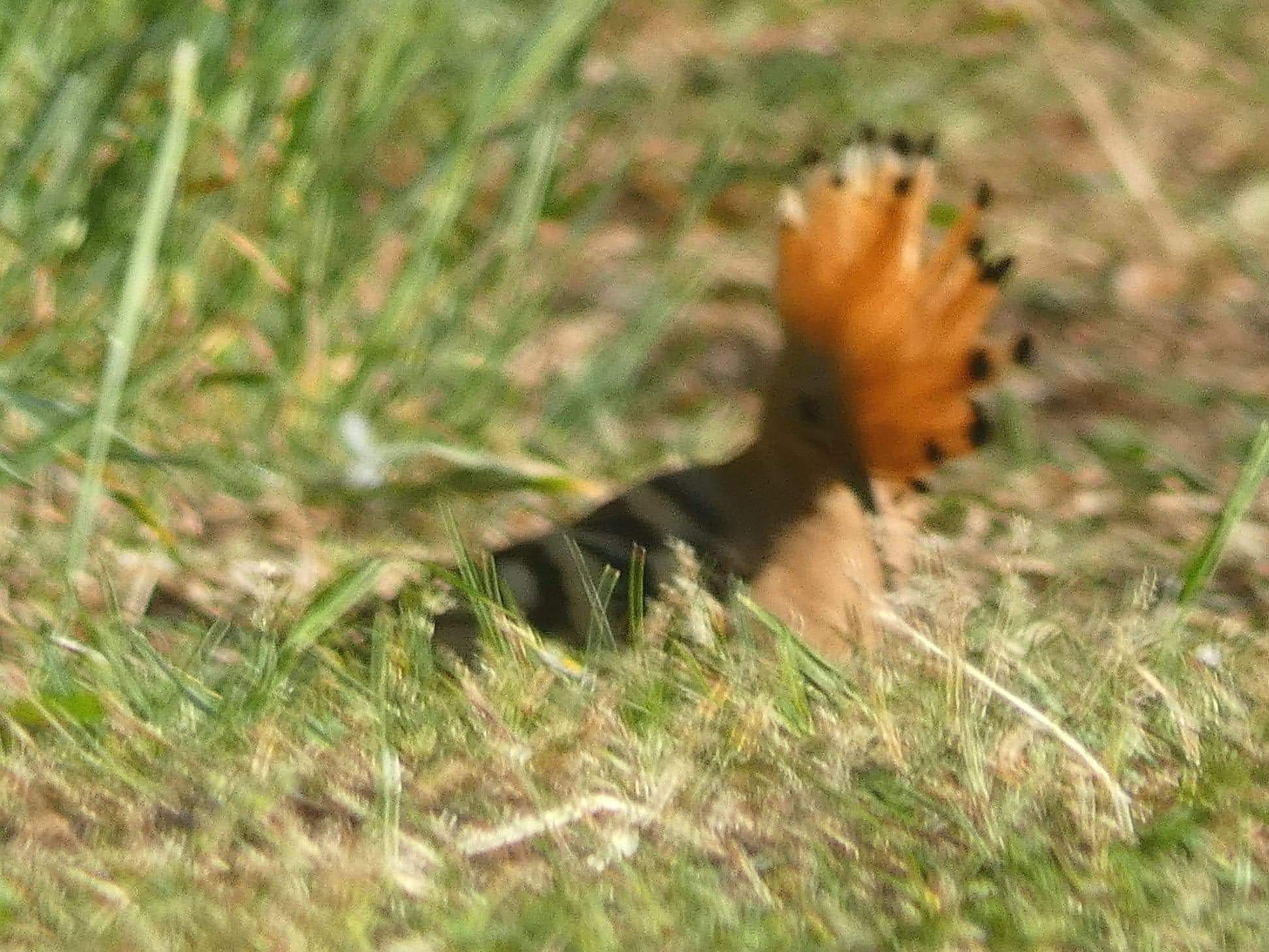
We made our way to the field and made sure we kept away from a few other birders who were still there. We walked down a path down the side of the field and got a good view of it through the railings.
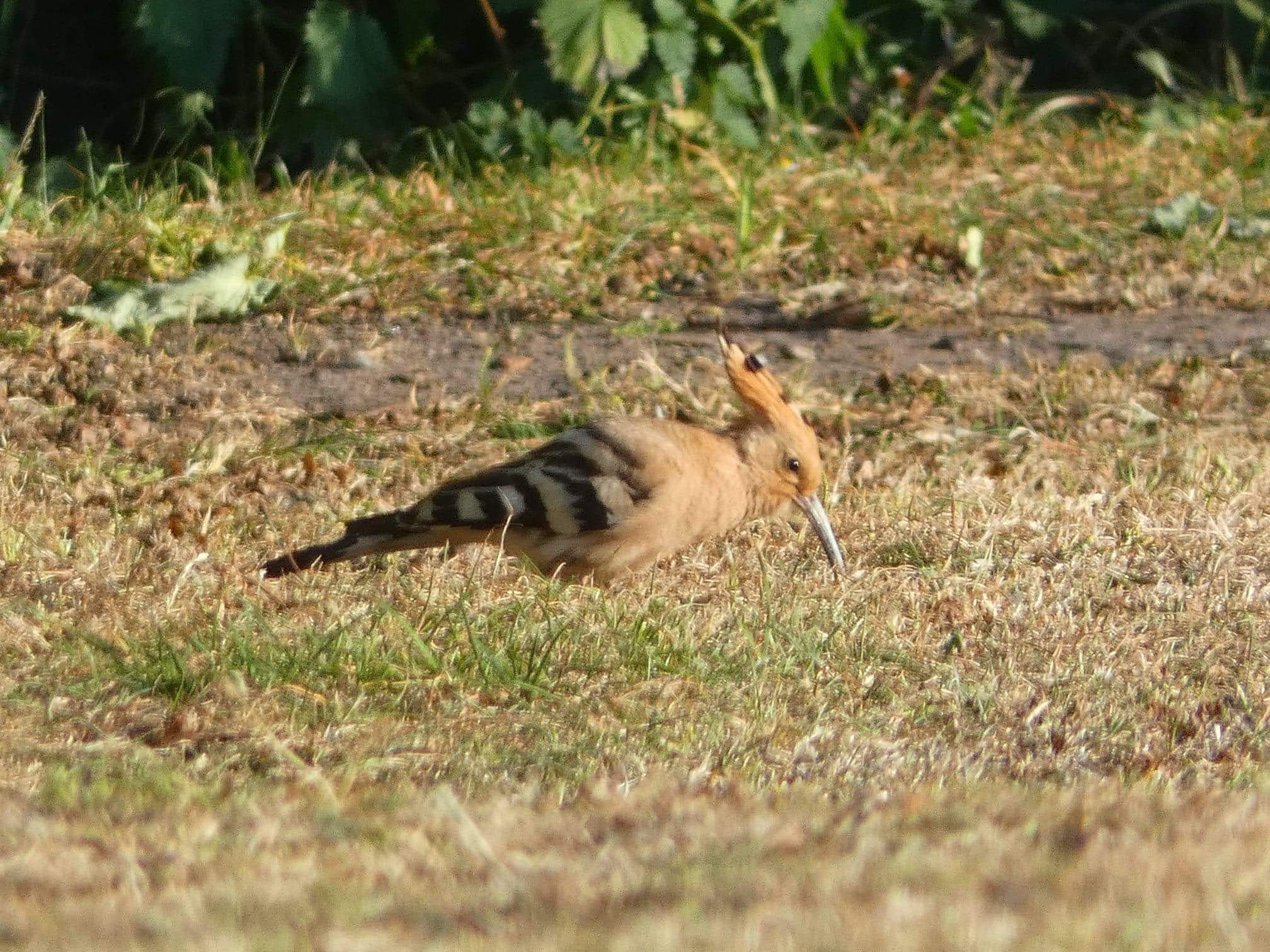
It stayed there quite some time, happily feeding off the ground and didn’t seem bothered by all the attention it was getting.
This was a fantastic first for us – and right on our doorstep!
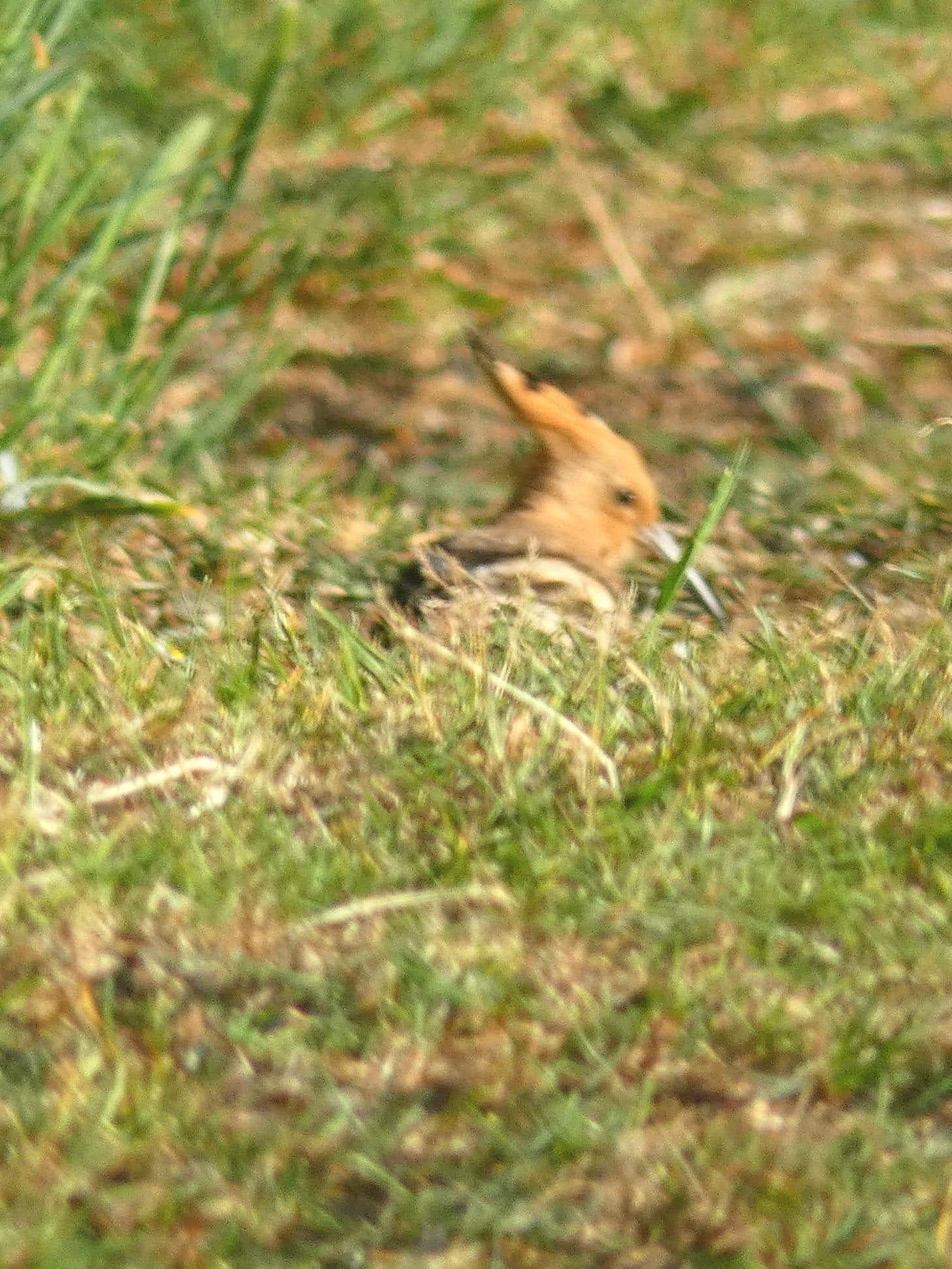
Waxwing wonders
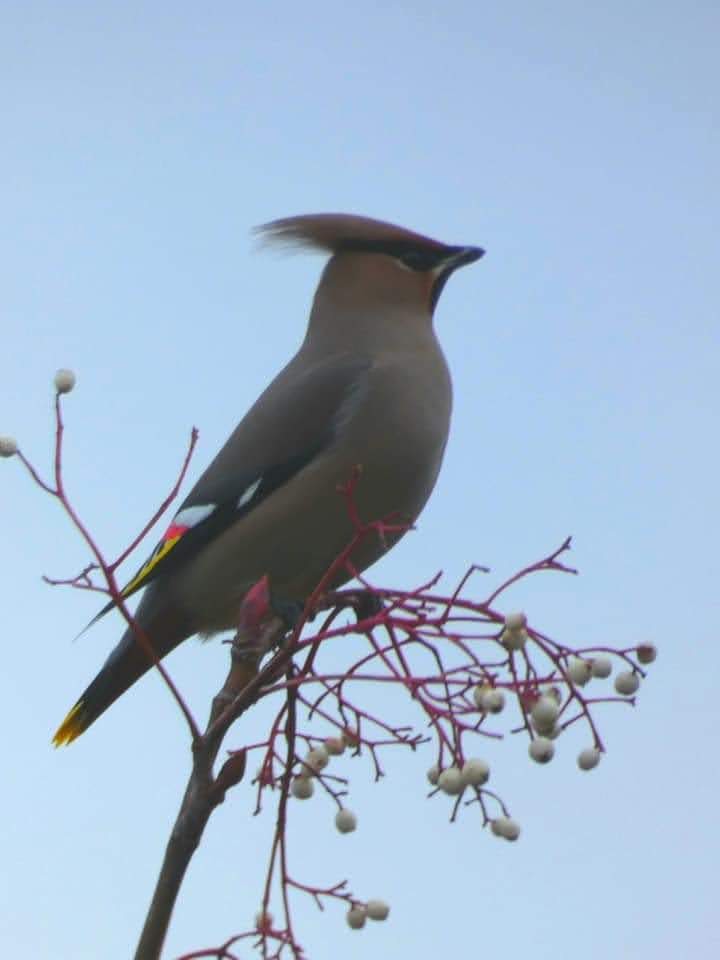
After a wonderful summer and autumn seeing some birds we’ve never seen before (red-breasted flycatcher for example), we didn’t think anything would top this.
However, this week we’ve had some rare visitors to our home town.
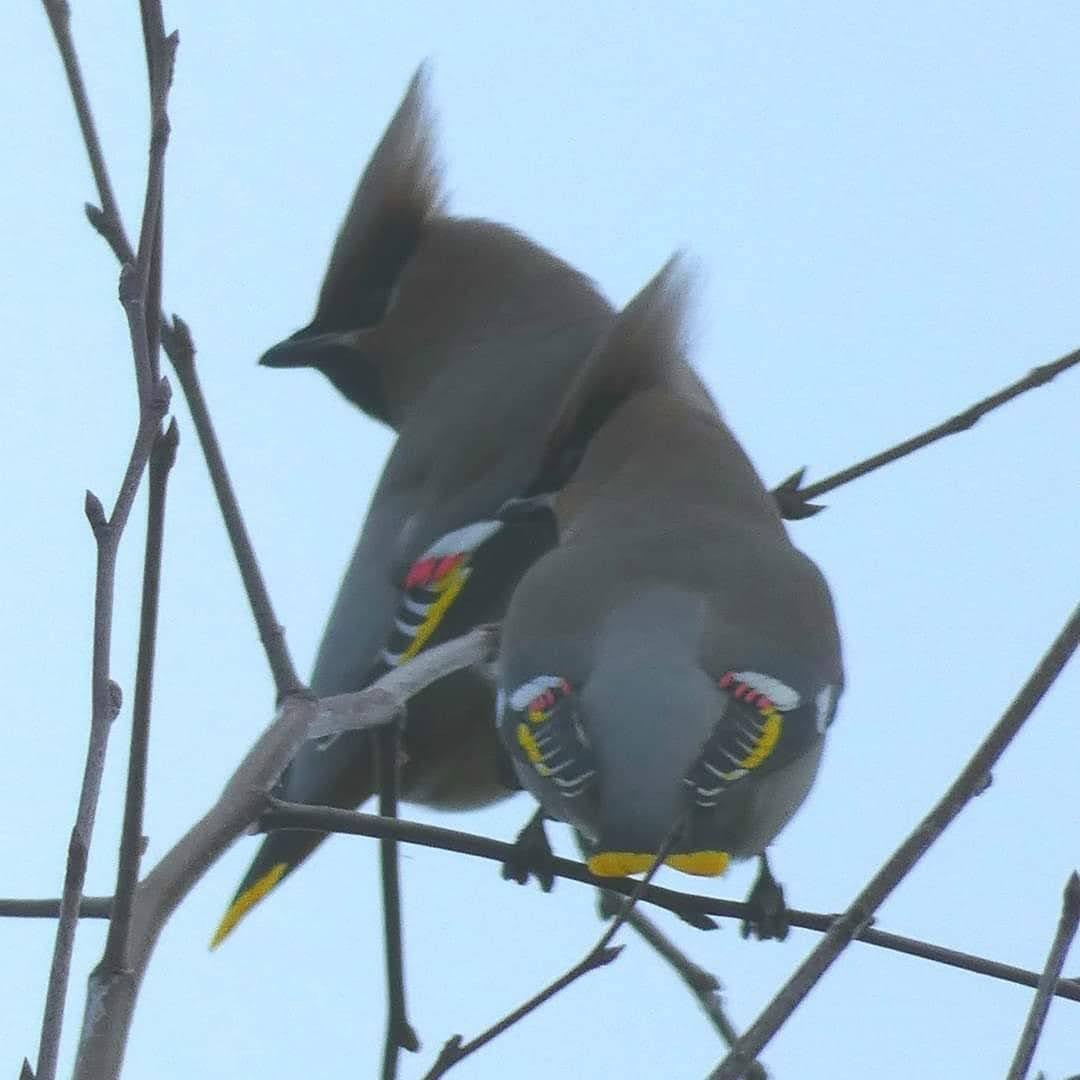
Lee and I have both been birders for many years, and have always wanted to see waxwings, but they have always eluded us.
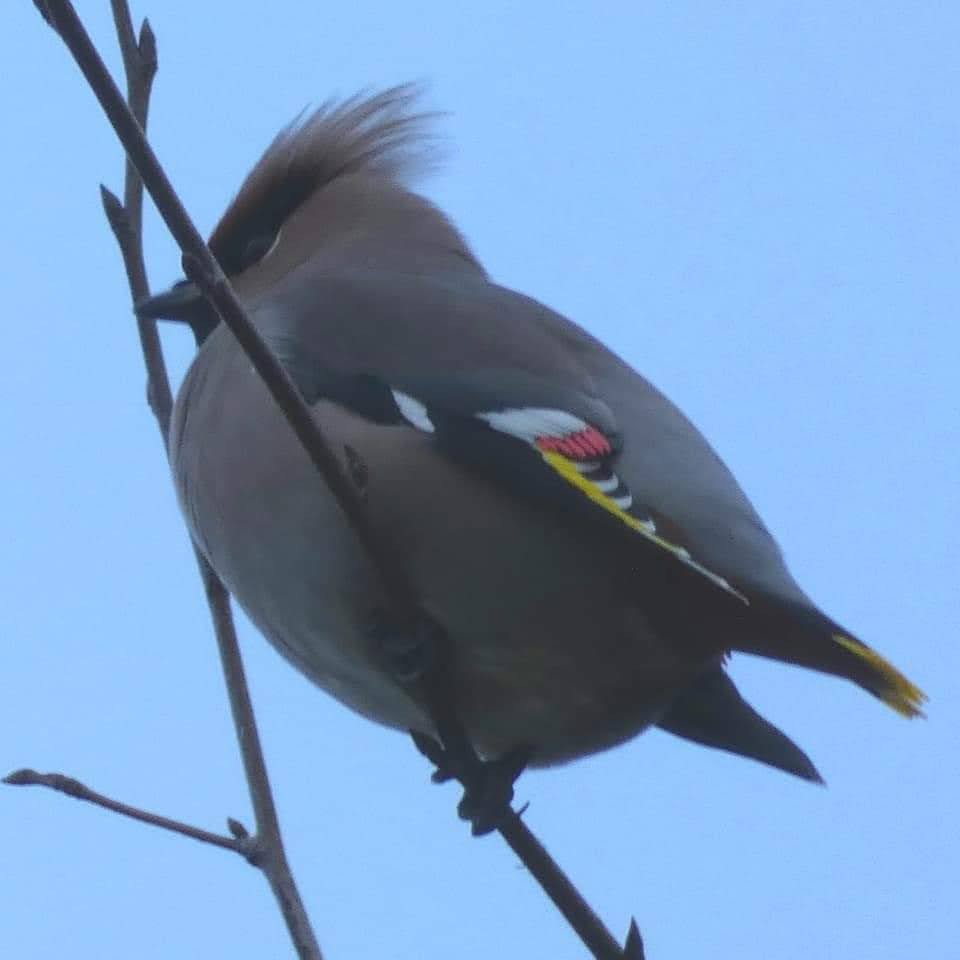
Waxwings visit Britain in the winter from Scandinavia, where shortages of food due to harsh conditions mean that they fly south to take advantage of the berries they find in our parks and gardens. They particularly like rowan berries.
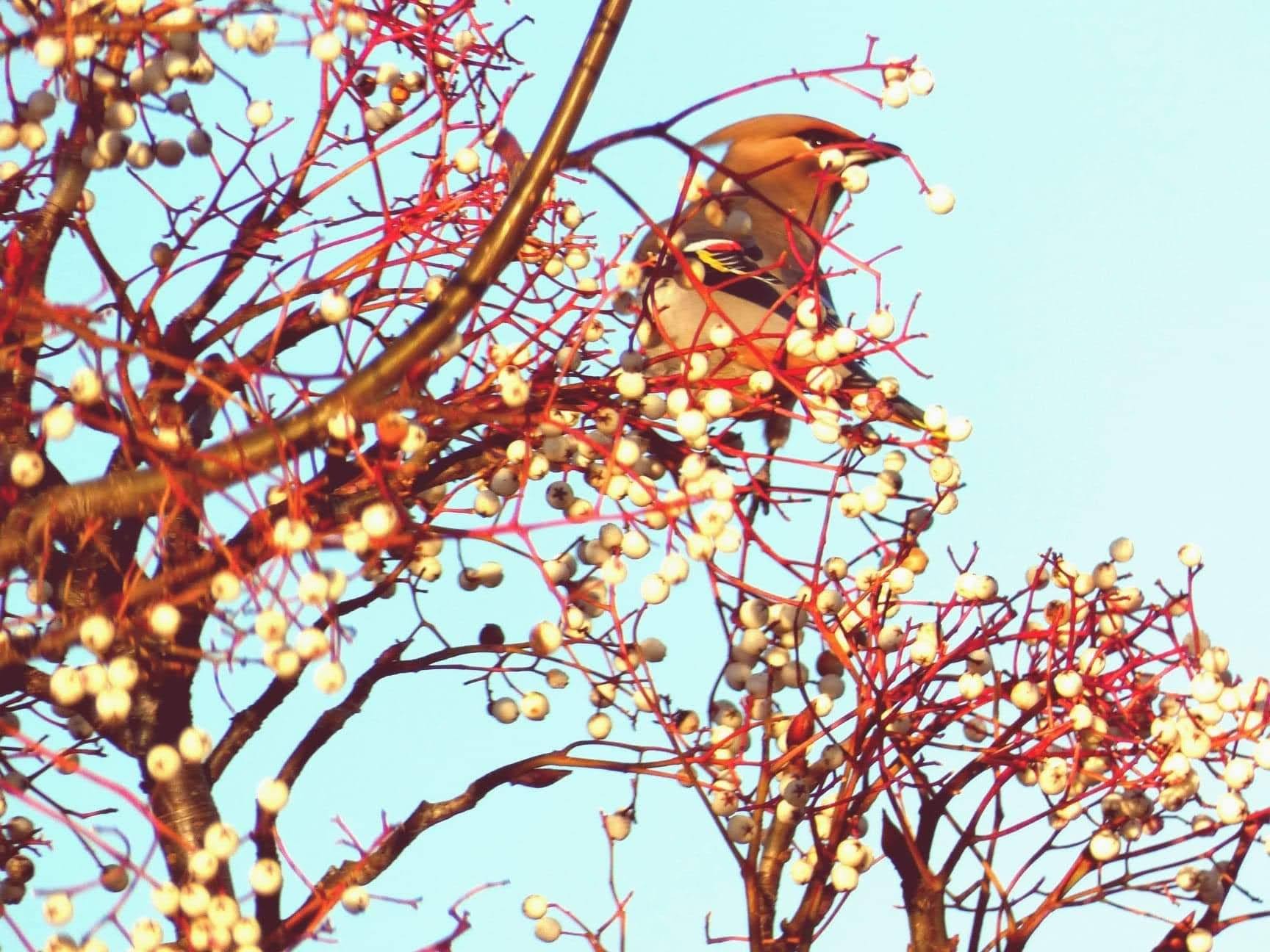
Lee had a message from one of his friends that four of these birds had appeared just up the road from us in someone’s garden. At the earliest opportunity, Lee went with his camera and managed to get these pictures.
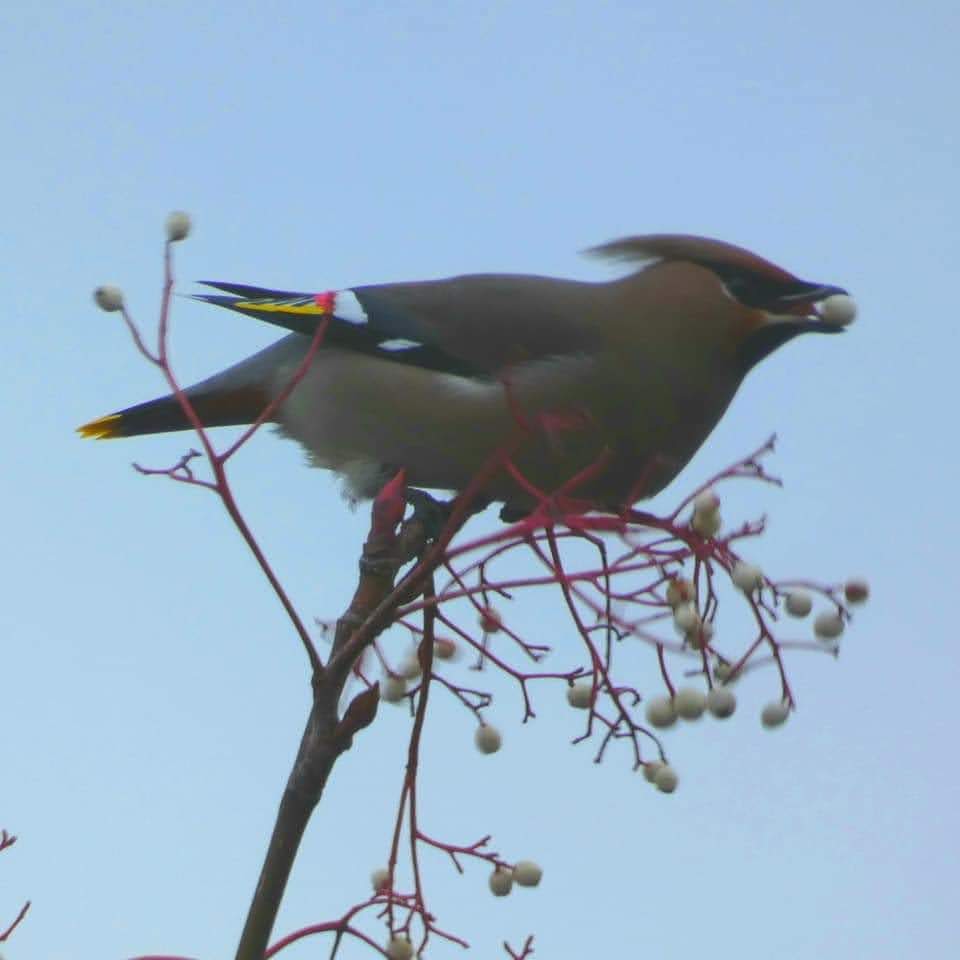
I also managed to see them one of the days they were here. The birds were feeding from a tree in someone’s driveway, then flying up to another tree further away from the road. It was fascinating to watch them.
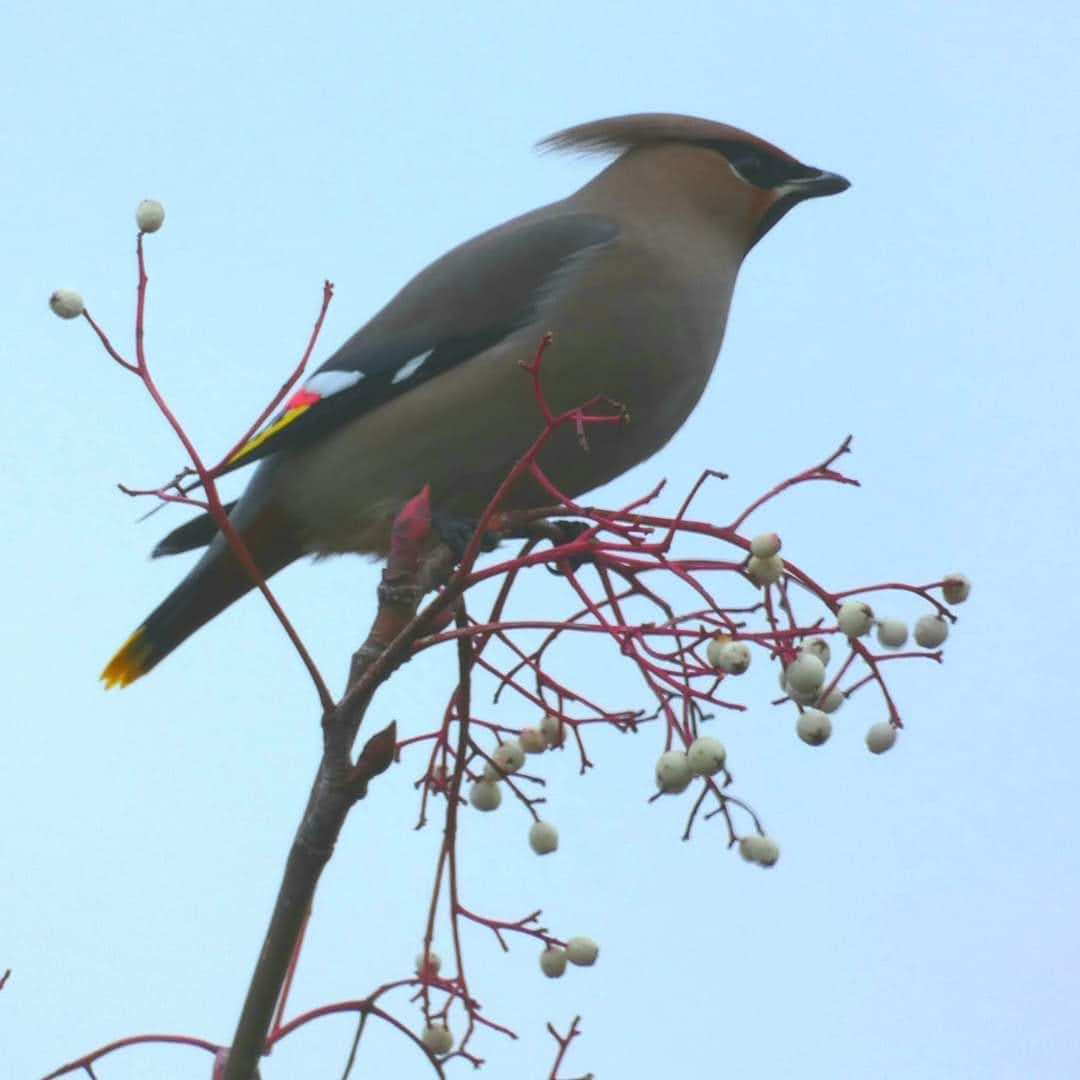
These exotic looking birds are really a delight. Waxwings are about the size of a starling and have a distinctive crest on their head. Their throats are black, and wings are black with white, yellow and waxy red markings. Their tails have yellow tips.
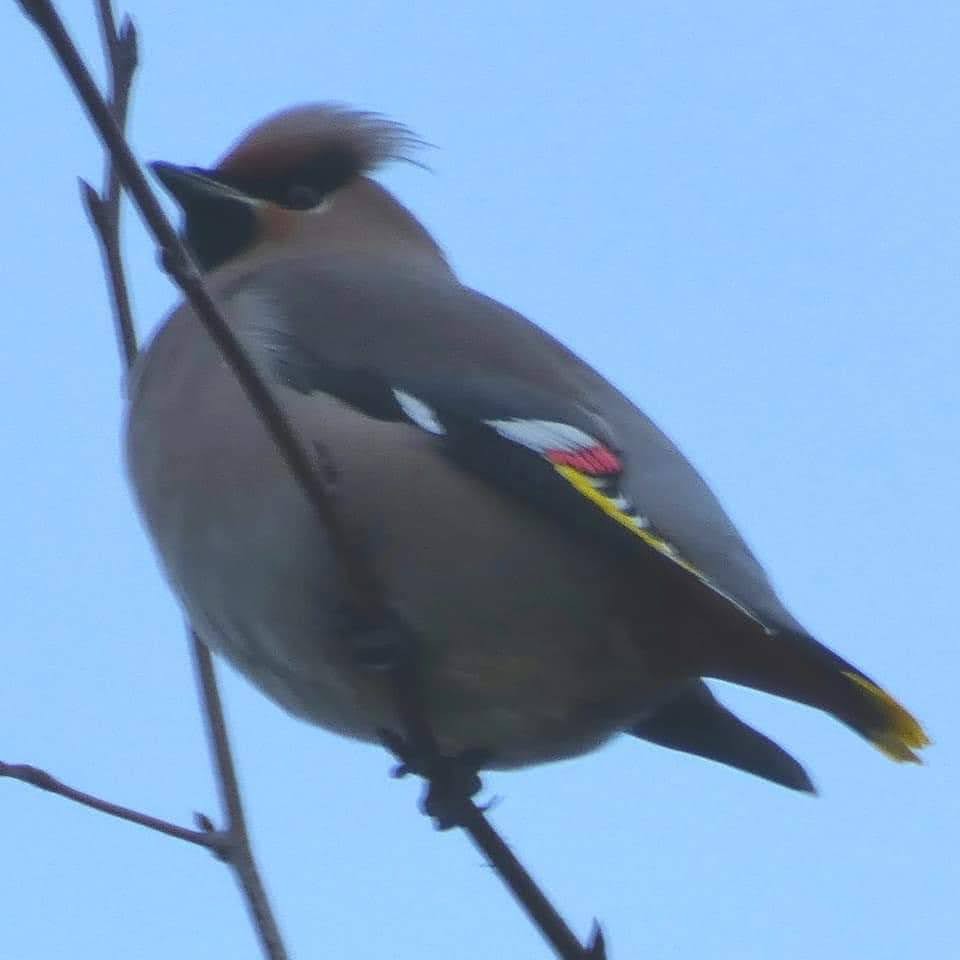
What a pleasure to have them on our doorstep! We really hope they will visit again!
The joys of summer
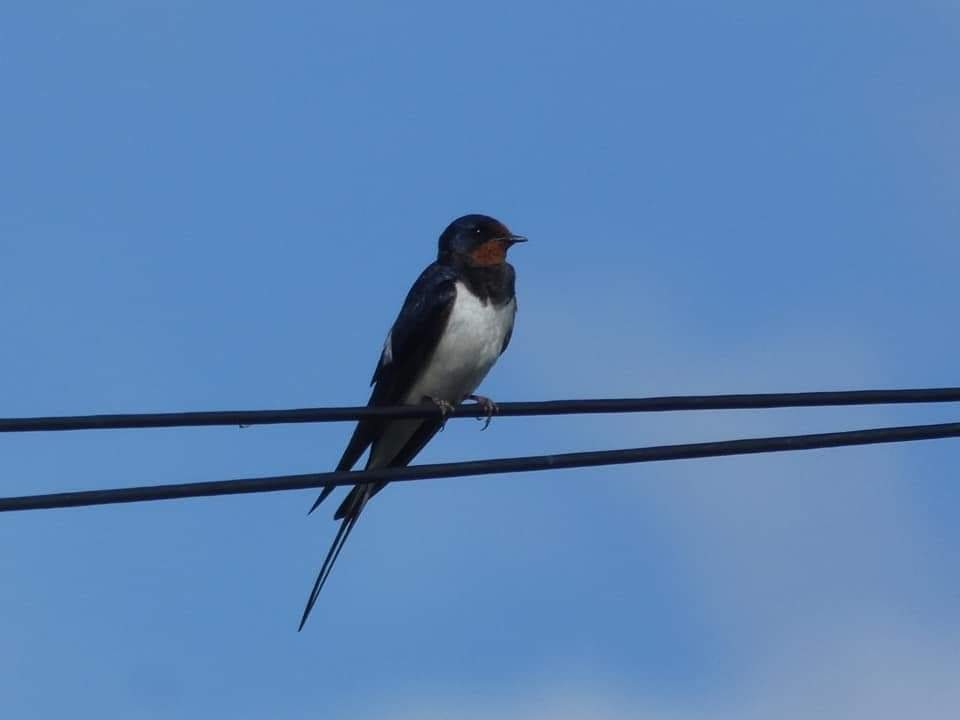
We’ve been getting out and about quite a lot now that I’m on holiday from work and we’ve had some lovely weather.
Many of the pictures today were taken down the Chesterfield Canal, one of our favourite spots to go walking and birding. The swallow pictured above was perched on a wire near the road – always a pleasure to see and photograph.
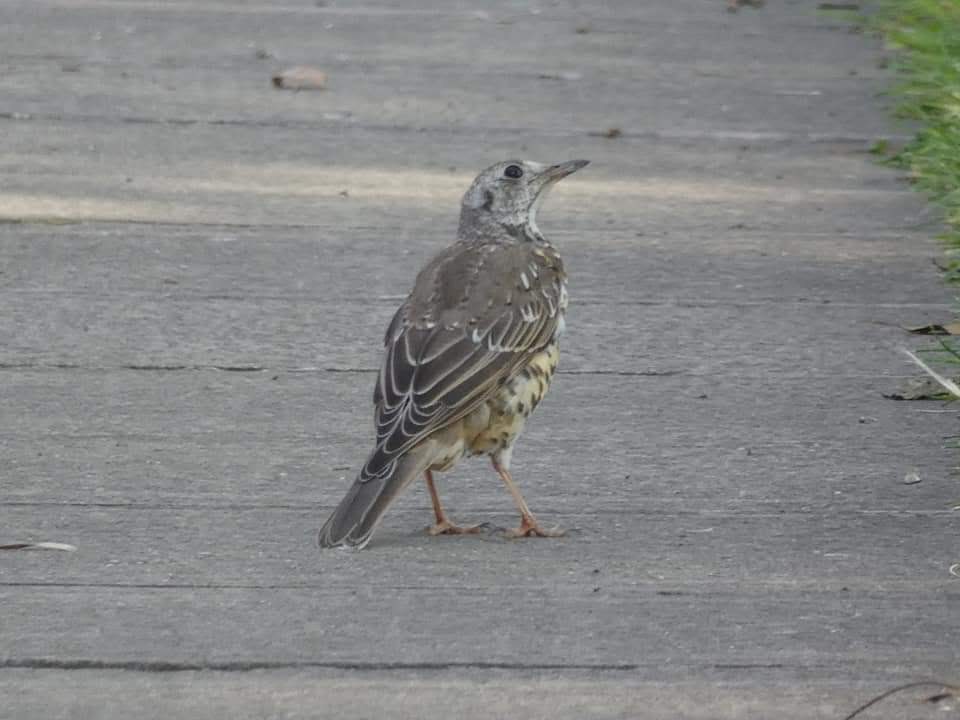
While walking along the towpath, we spotted this young mistle thrush, who stayed quite a while and let us get fairly close. We saw a few more of these in the fields at the side of the canal.
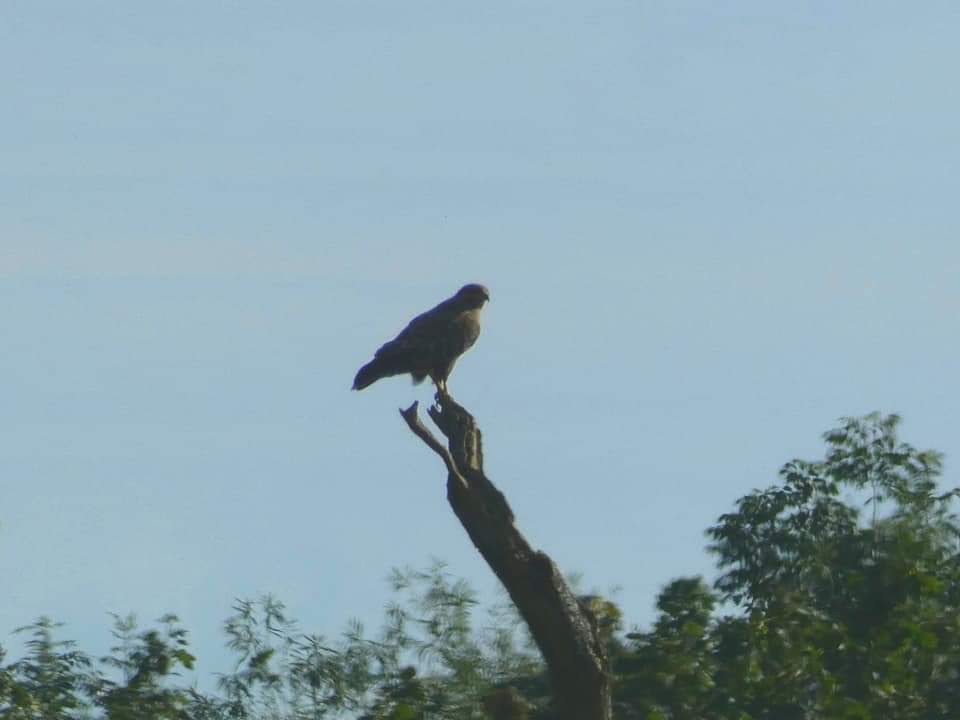
Lee also managed to capture this buzzard sitting on a tree stump. There were more circling in the skies above, but it was good to get one sitting still for a change!
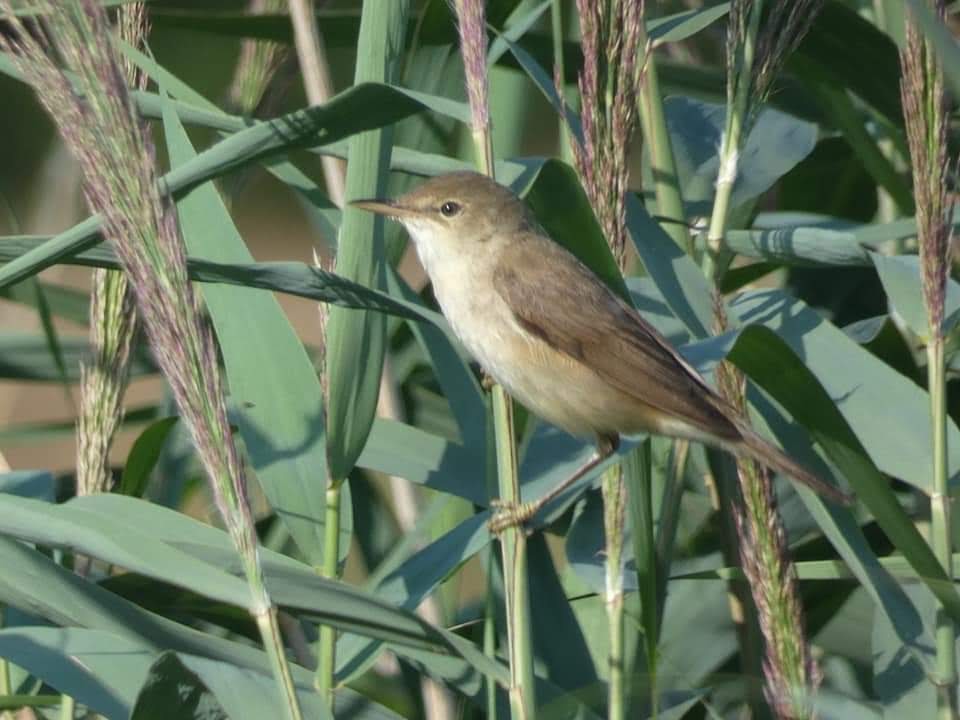
As we approached the reedbeds further down the canal, we heard the unmistakable call of reed warblers, and saw several of them darting in and out of the reeds.
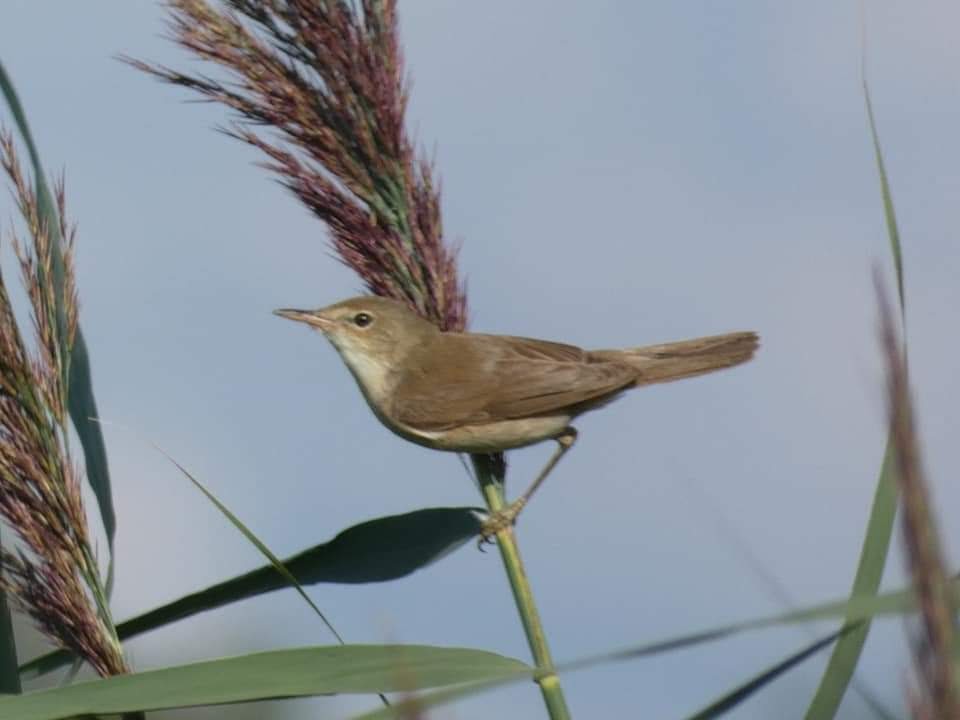
Beautiful birds!
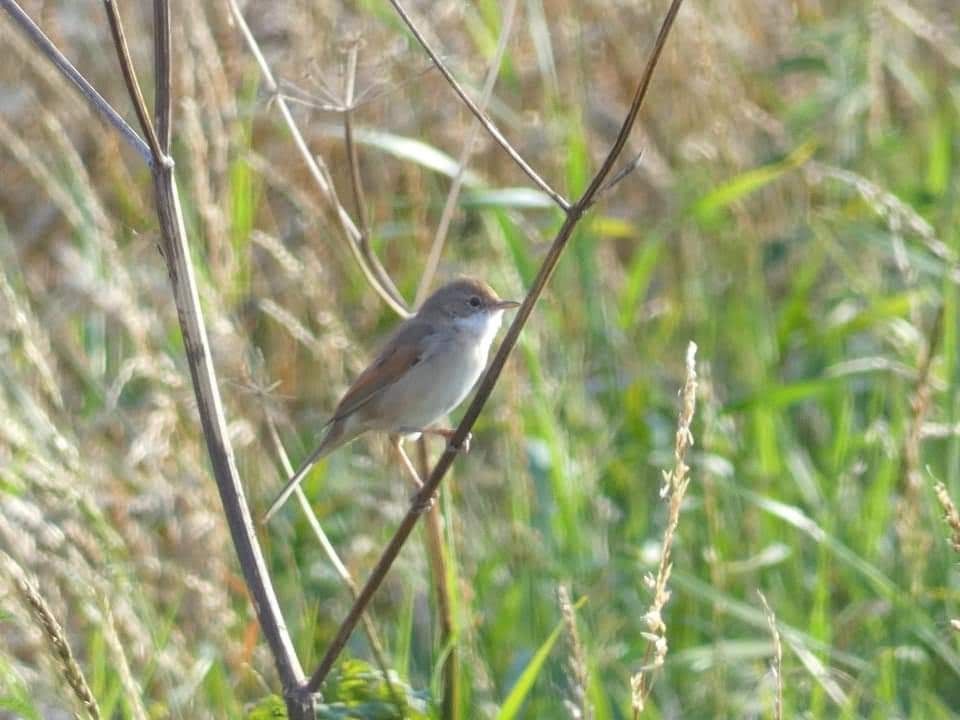
We also spotted a whitethroat, pictured above. While looking at the whitethroat, another bird appeared in the field of wheat close by. It was flying into the air to catch flies and then returning to the field or a stem of grass, but it was very far away. We were sure that it was a bird we hadn’t seen before. We were right – it was a whinchat!
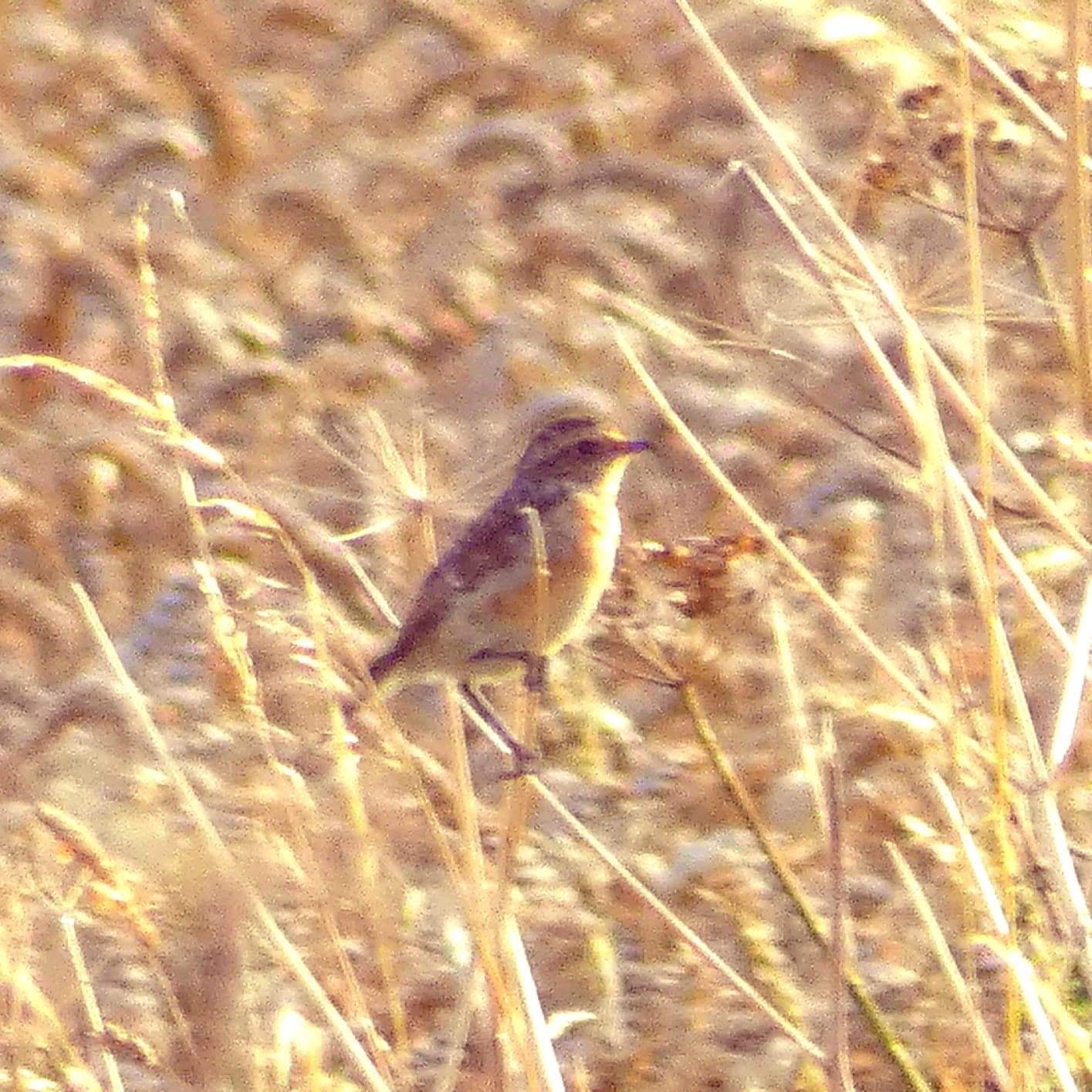
The picture is a little blurry as it was so far away, but we were really excited to have seen a bird we’d never encountered before.
We also saw some delights of nature on our recent holiday, including these newly fledged kestrels on the cliffs by the beach.

They had just left the nest and were still calling parents for food.
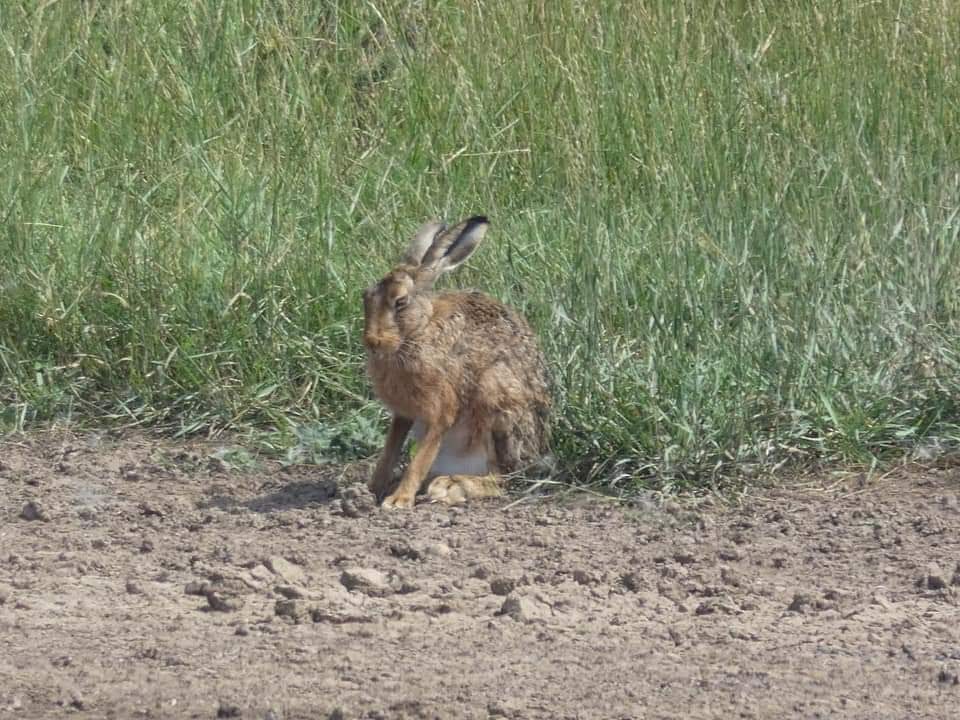
We also saw hares and deer.
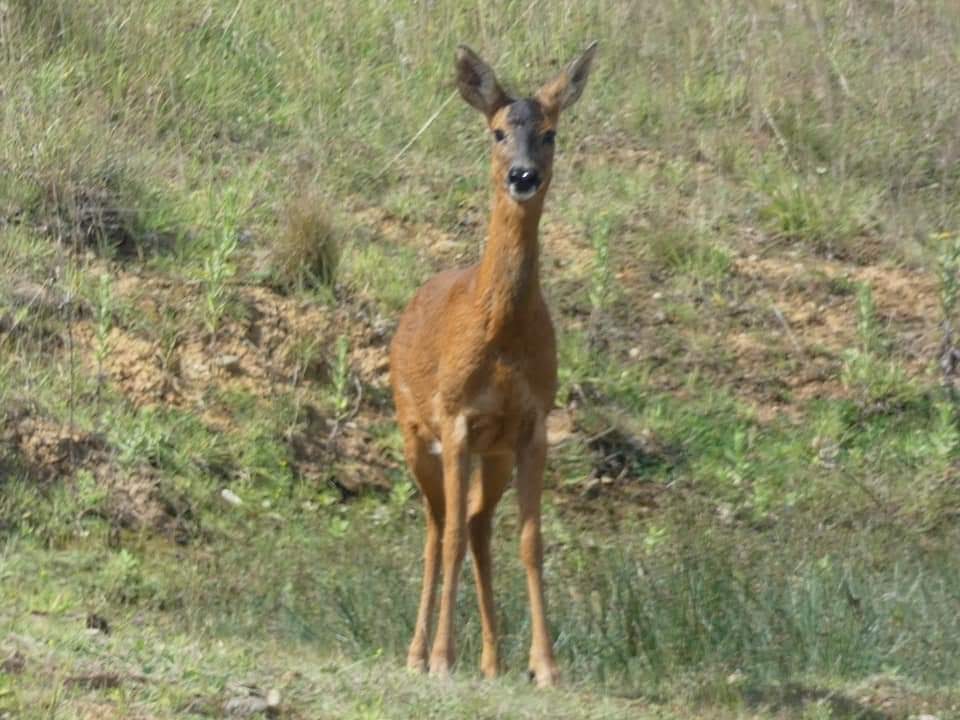
Nature never ceases to amaze us – we love our walks around our local area and further afield. Wherever you are this summer, we hope you have the opportunity to get out and enjoy nature whenever you can.
Spooning around
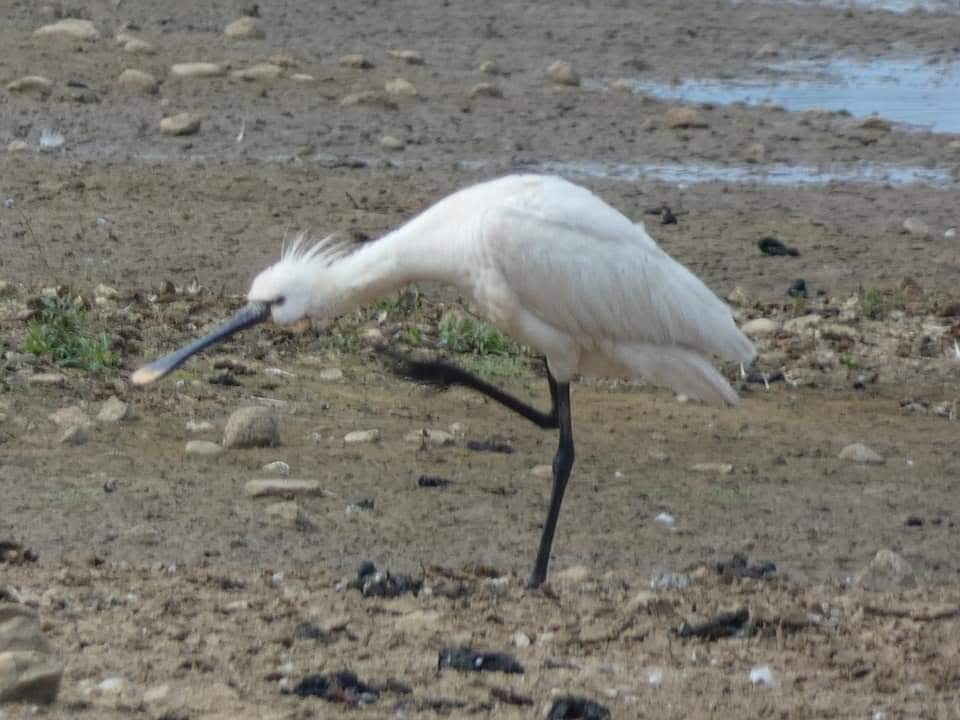
We’re so excited that we have a couple of birding firsts to bring to you today! The first one is this lovely spoonbill which we saw at Filey Dams whilst at our caravan on the East coast of Yorkshire.
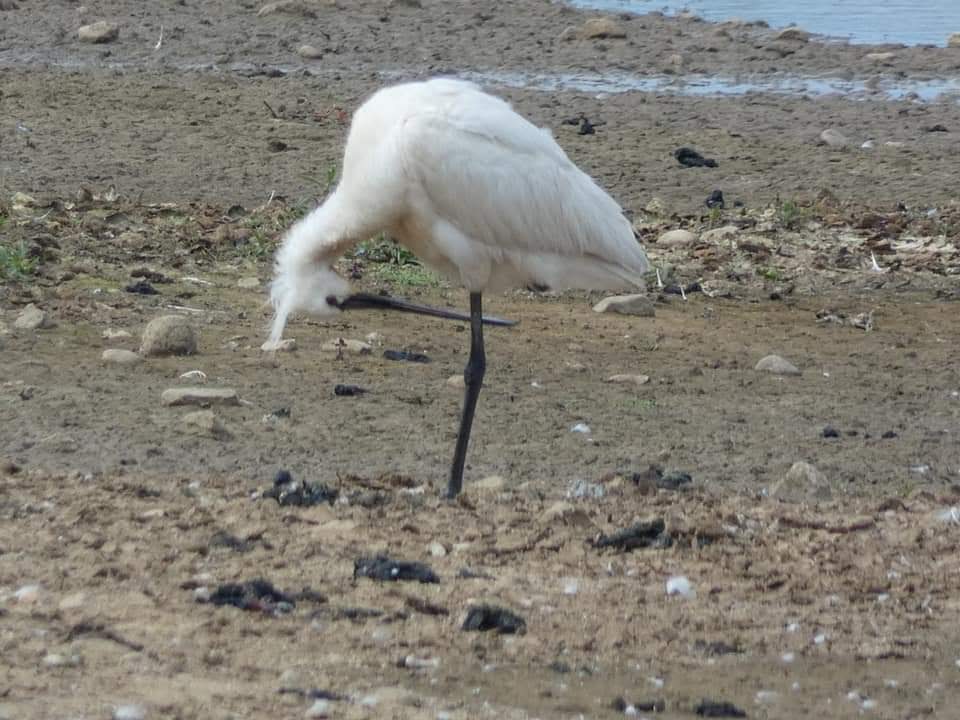
We arrived at the reserve and went into one of the hides, from which we spotted a white stork-like bird, but could only see the back of it. We went into a different hide, and from there we could see that it was a spoonbill, although it had its head under its wing and wasn’t moving very often.
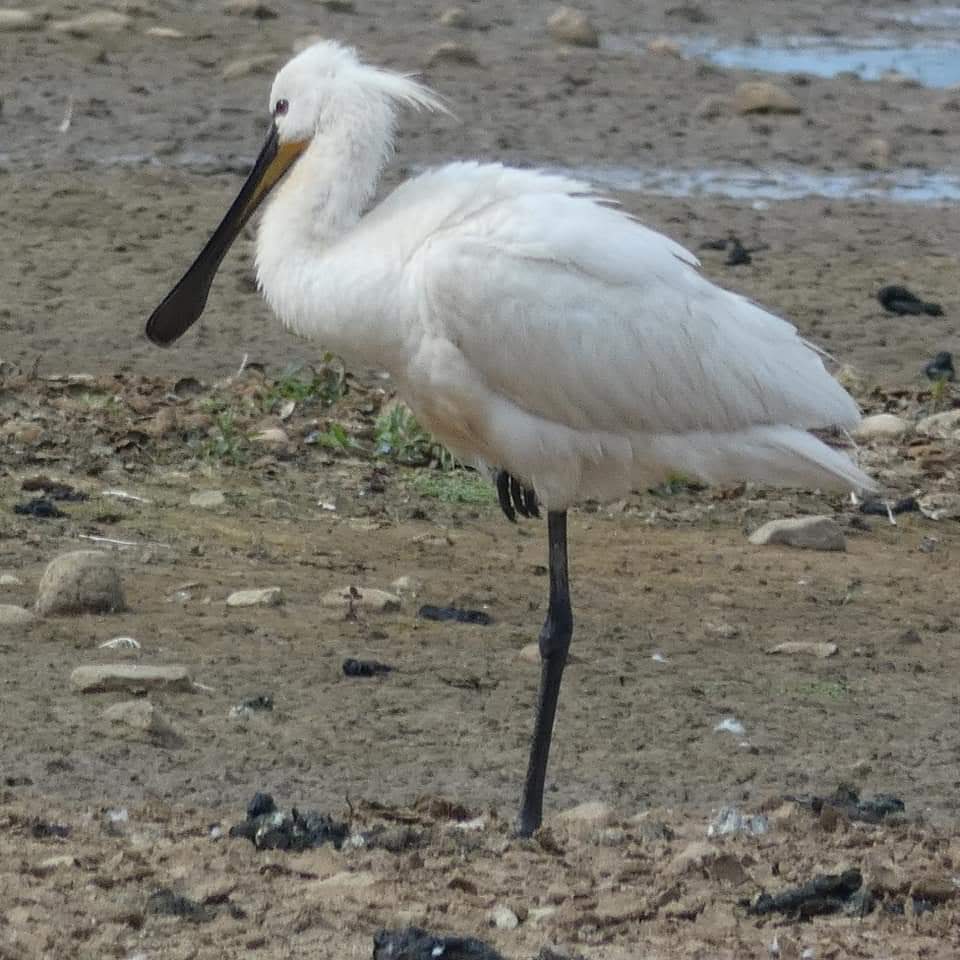
However, patience paid off and every so often it would move and have a little scratch, much to our delight. Another bird to tick off our list!

We also saw these lovely snipe in the same place.
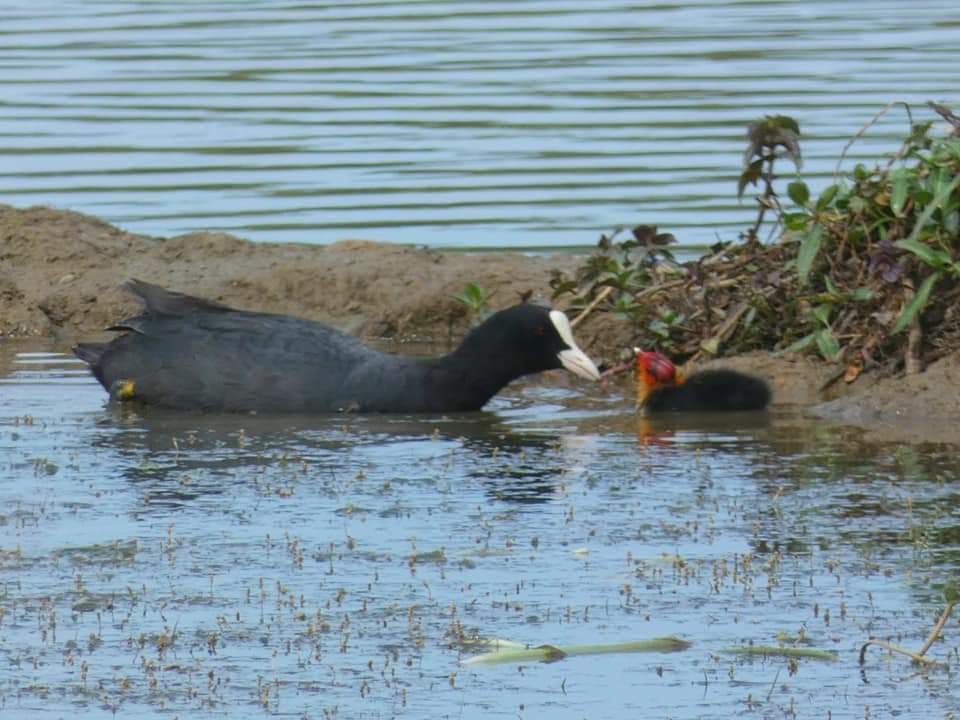
Plus a young coot family!
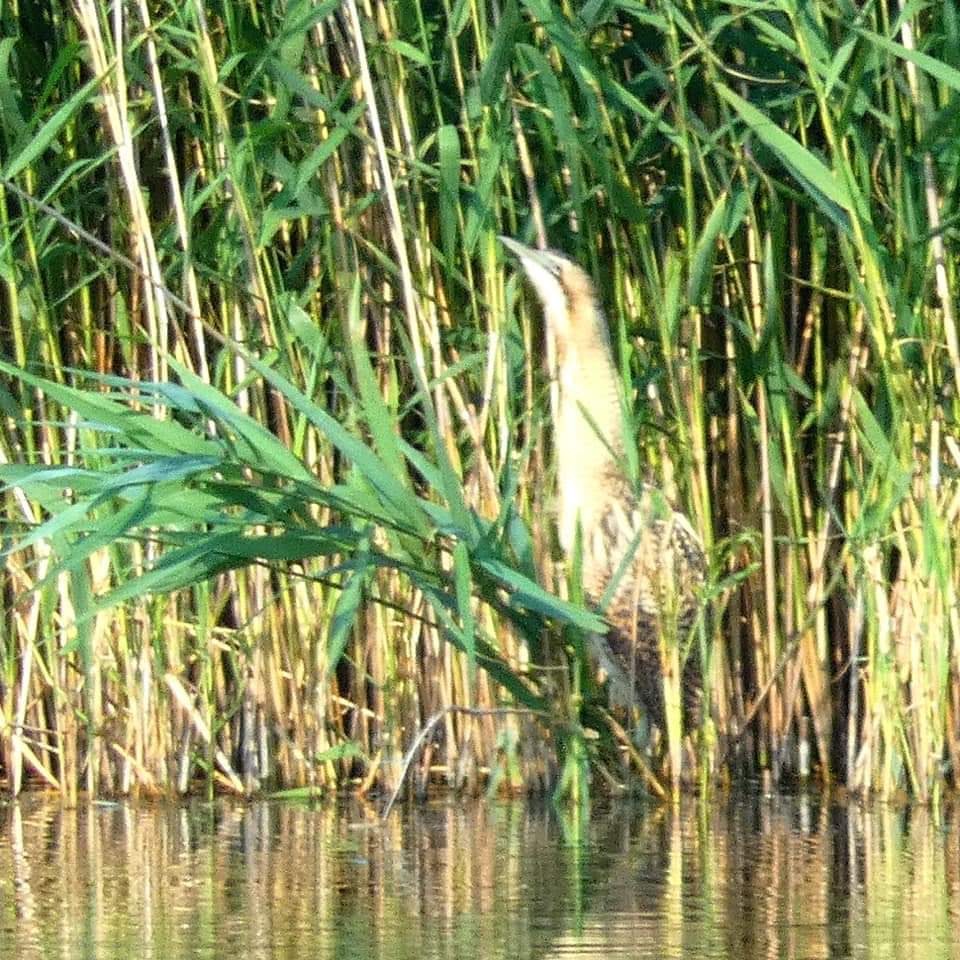
Our other first was back on home ground. We were visiting one of our local favourite places to go bird spotting and found this fantastic bittern. It was so obvious to us that we could see it with our naked eyes – amazing considering its camouflaged plumage. We stood and watched it for quite some time and Lee was able to snap some lovely pictures.

Lee has been spending quite a bit of time around Lound lakes lately, and also got this picture of little egrets. They are becoming more common now, but we still love seeing them. The one on the end looks like it’s gasping for a drink – not surprising considering the recent heatwave!

In the same place he also saw this beautiful buzzard. They are common birds of prey, frequently seen soaring high in the sky, so it was a pleasure to find one sitting on an exposed branch as if waiting for its photograph to be taken.
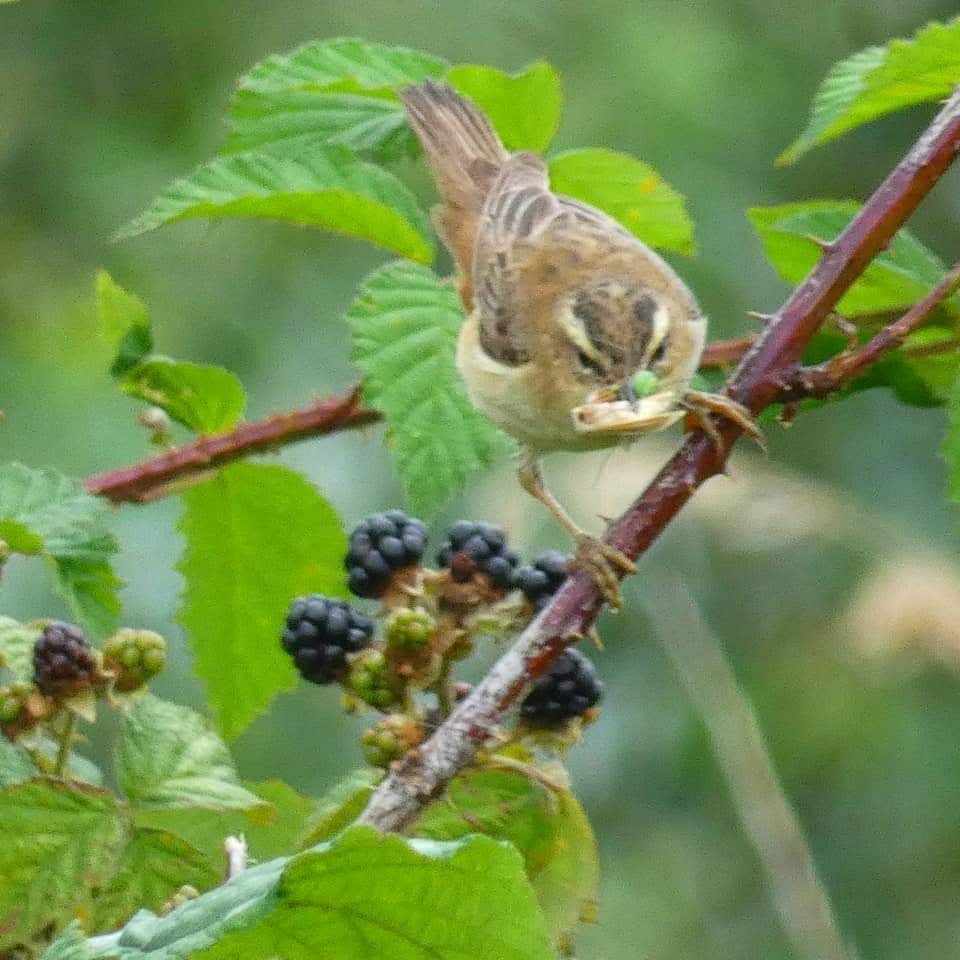
Finally, this sedge warbler was feeding young, probably its second brood by now. It certainly had a feast for its young ones.
We’re hoping to continue to get out and about over the summer, both at home and at the coast. Hopefully we’ll be able to bring you some more firsts!
Summer birds by the sea

We’ve been spending some time at our caravan on the east coast of Yorkshire recently, and managed to capture some beautiful birds. These kittiwakes with their young were photographed at Flamborough, along with some of the other birds featured here.
These three beauties above were showing their lovely colours and singing in the sunshine: the goldfinch, greenfinch and wren.

We’ve also included some pictures of the stunning coastline at Flamborough, looking even more special with bright blue skies and sunshine.
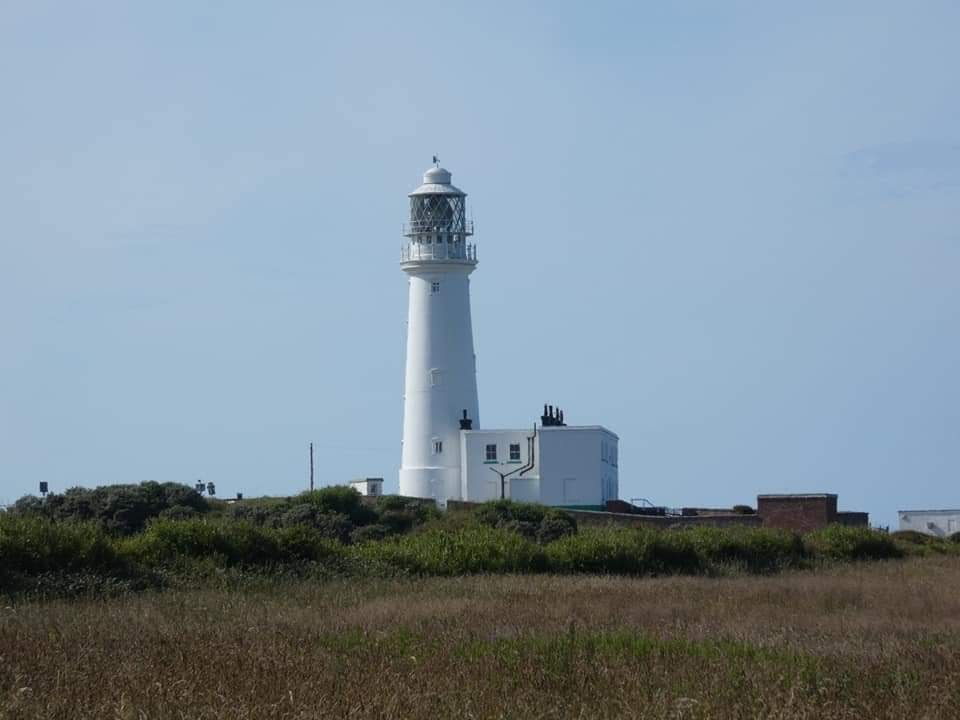
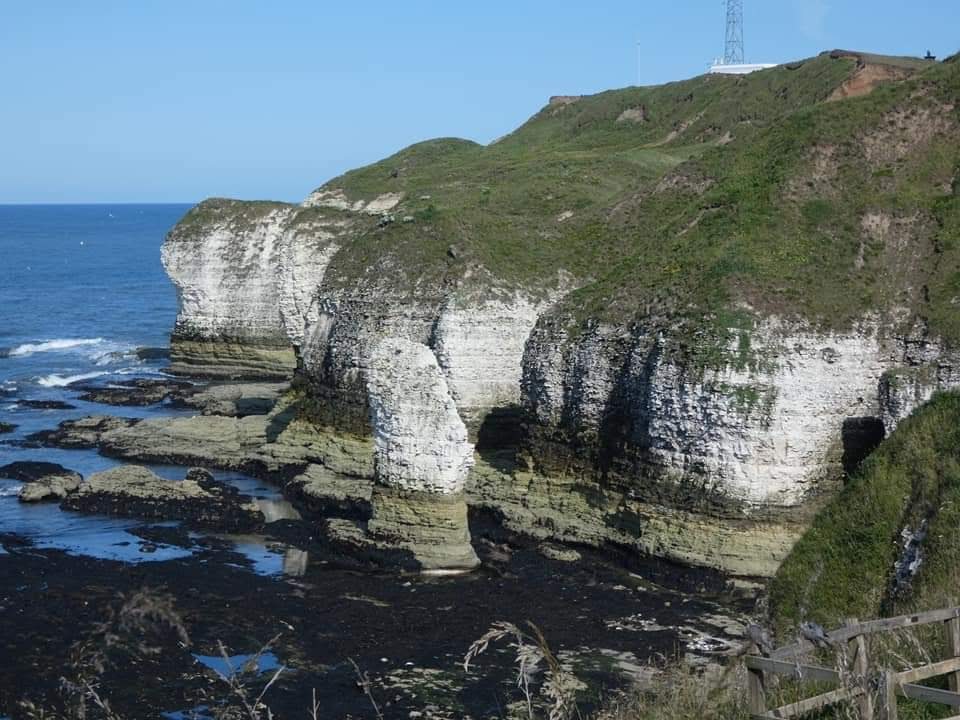
Back on our own Barmston Beach, we have colonies of sand martins, and Lee managed to capture some young peering out of their nests. We stayed a safe distance away but still managed to photograph some magical moments.


However, possibly the most exciting spot for us was this adorable puffling (young puffin).
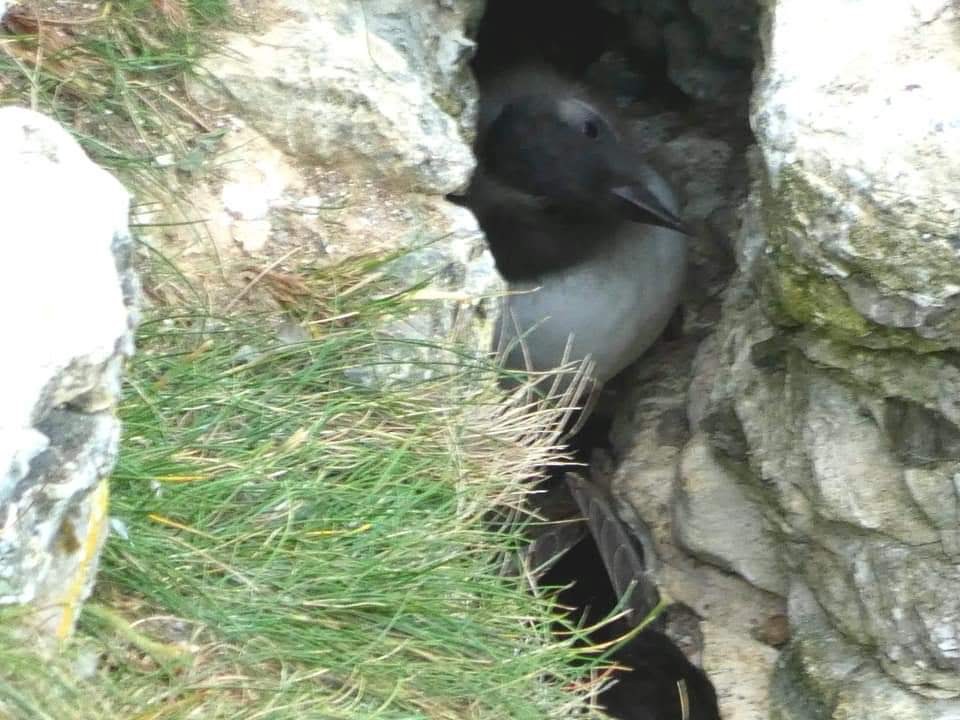
We visited Bempton Cliffs RSPB reserve with the hope of spotting one; however, realised that it would be very difficult as they hide in crags until they are ready to fledge straight into the sea. They usually do this at night, in order to avoid predation.
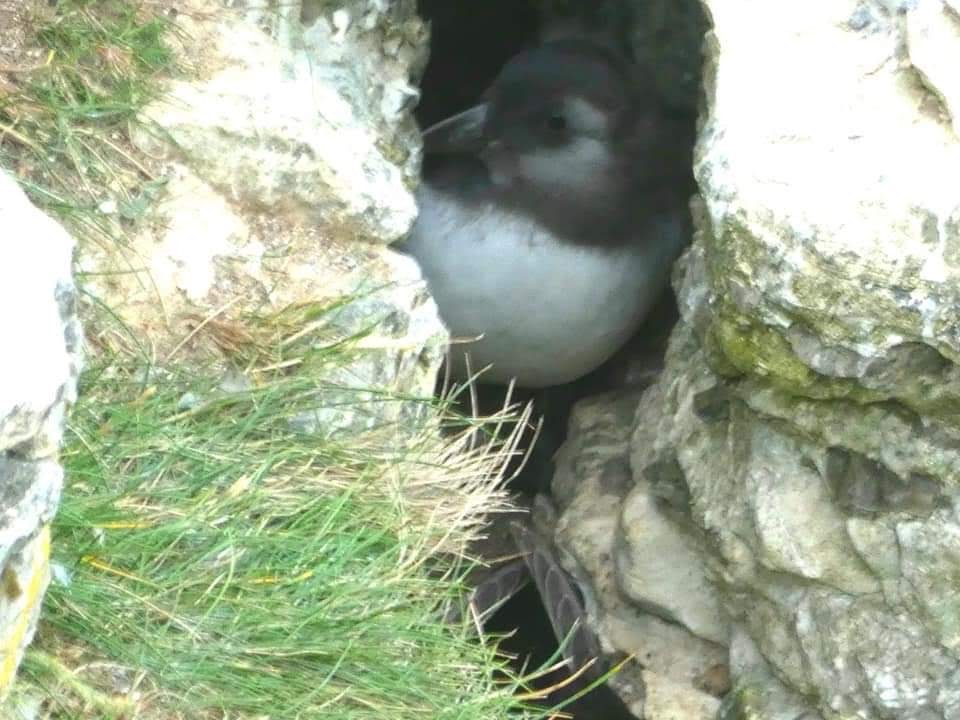
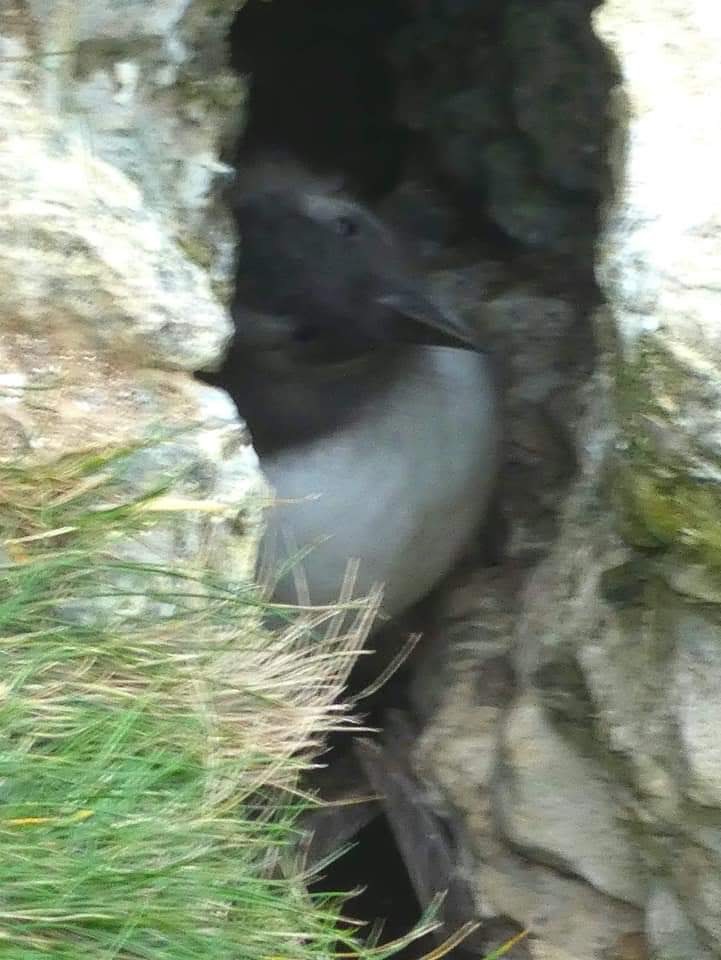
One of the volunteers at the reserve told us there was one near one of the view points, but the parent was stood in front of it, blocking any views of the puffling. We carried on around the reserve and then tried again to spot it before leaving.
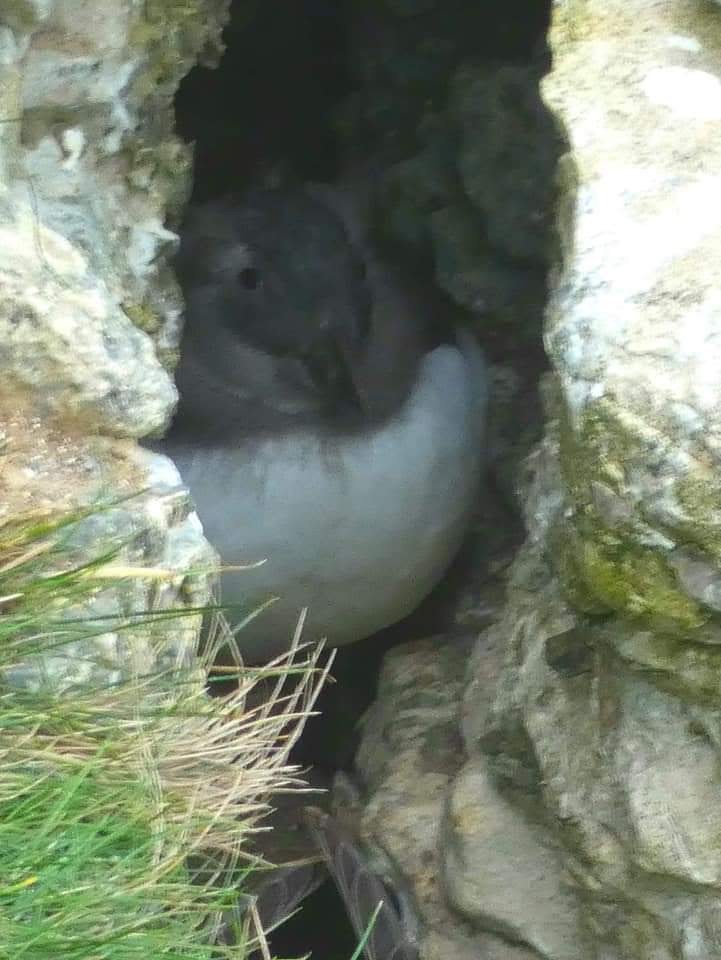
To our delight, the parent bird had moved and the young bird was sticking its head out of the crag.
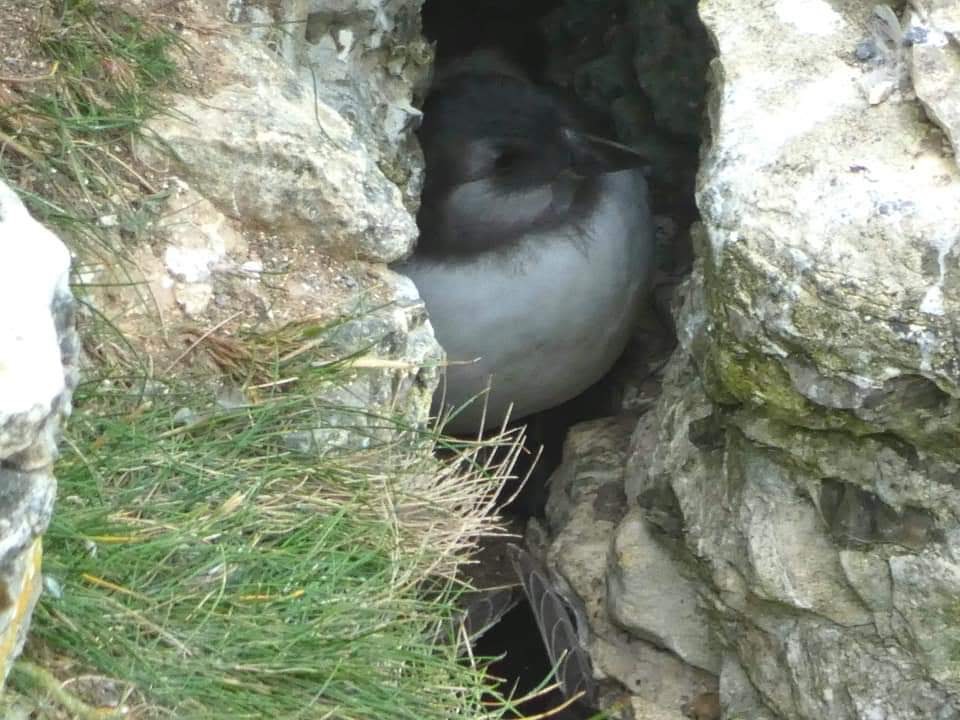
Finally – our first view of a puffling! We’re sure you’ll agree they’re so cute and fluffy!
We returned home from our holiday very pleased to have seen one. There are also many birding delights to be had on our doorstep: Lee captured this lovely goldcrest in our local King’s Park a couple of days ago – beautiful!

‘Ey up, duck!
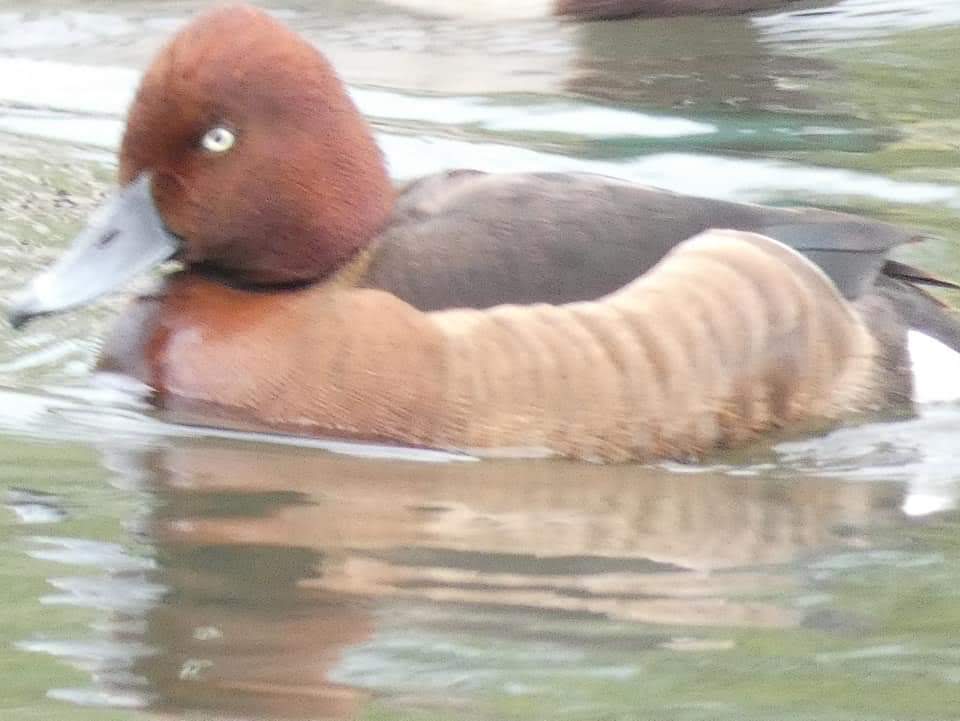
A couple of weeks ago a rare duck turned up in my hometown of South Kirkby: the ferruginous duck.

One afternoon while visiting my mum we decided to pop down to the duck pond to see if it was still there.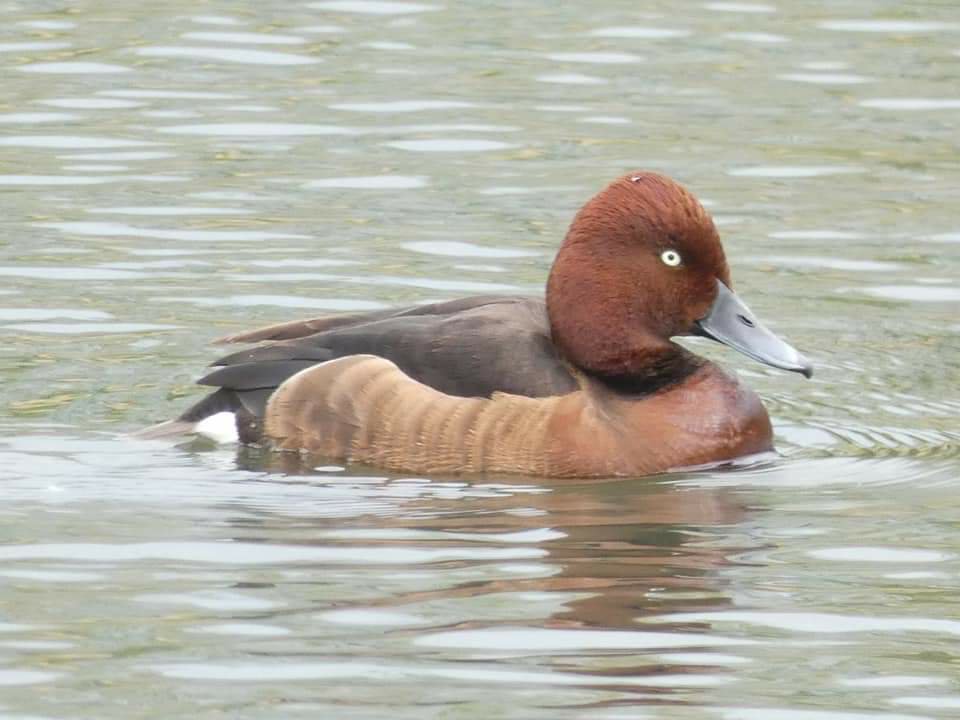
At first, apart from a rather angry mute swan, it appeared all the ducks on the pond were tufted ducks.
However, one of the ducks which previously had its head under its wing swam closer and we saw that it was different from the tufted ducks: more rusty in colour.
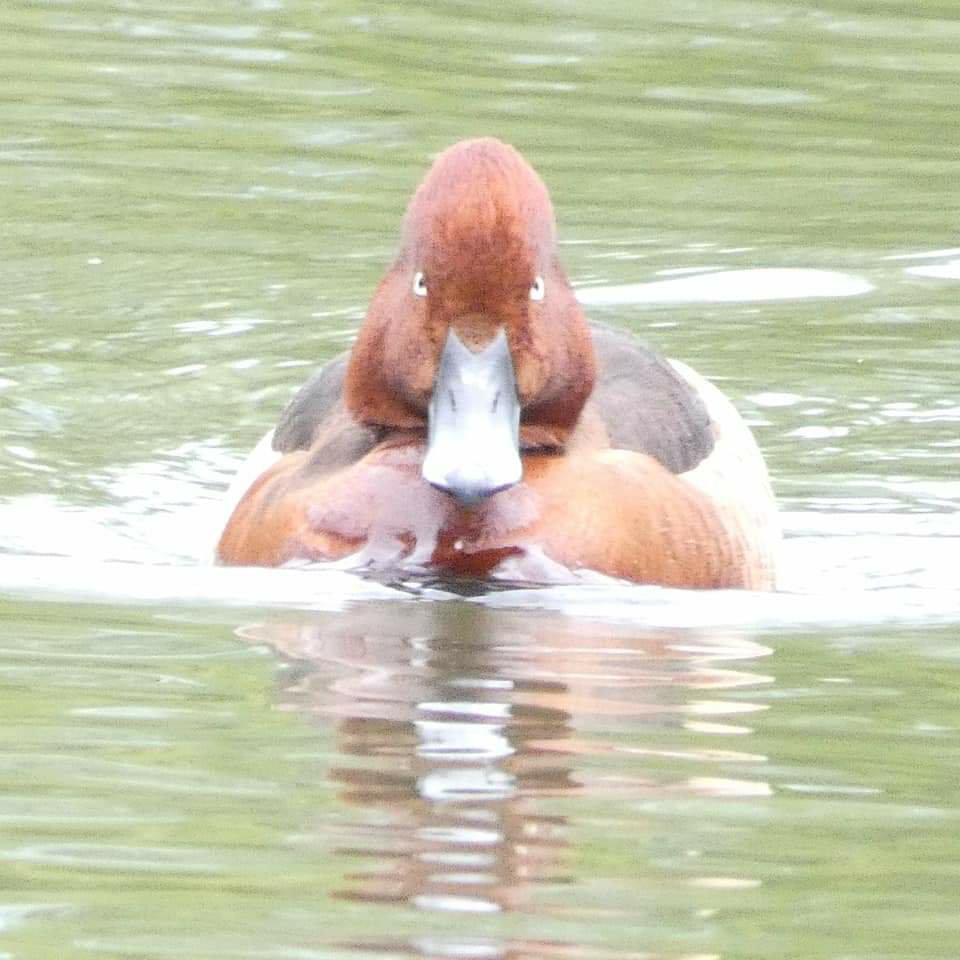
It came closer and gave us a chance to get a few pictures. Ferruginous ducks are rare visitors to Britain in autumn and spring, so we were really lucky to see it!
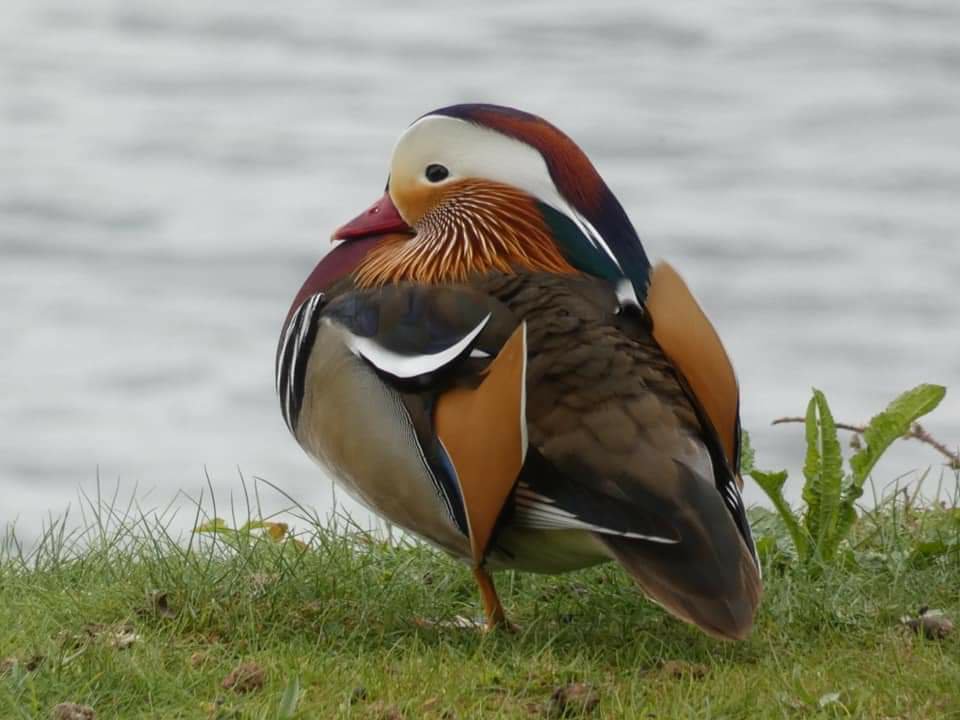
We saw this lovely mandarin a few weeks ago at Whisby nature park near Lincoln. Its colours are breathtaking.
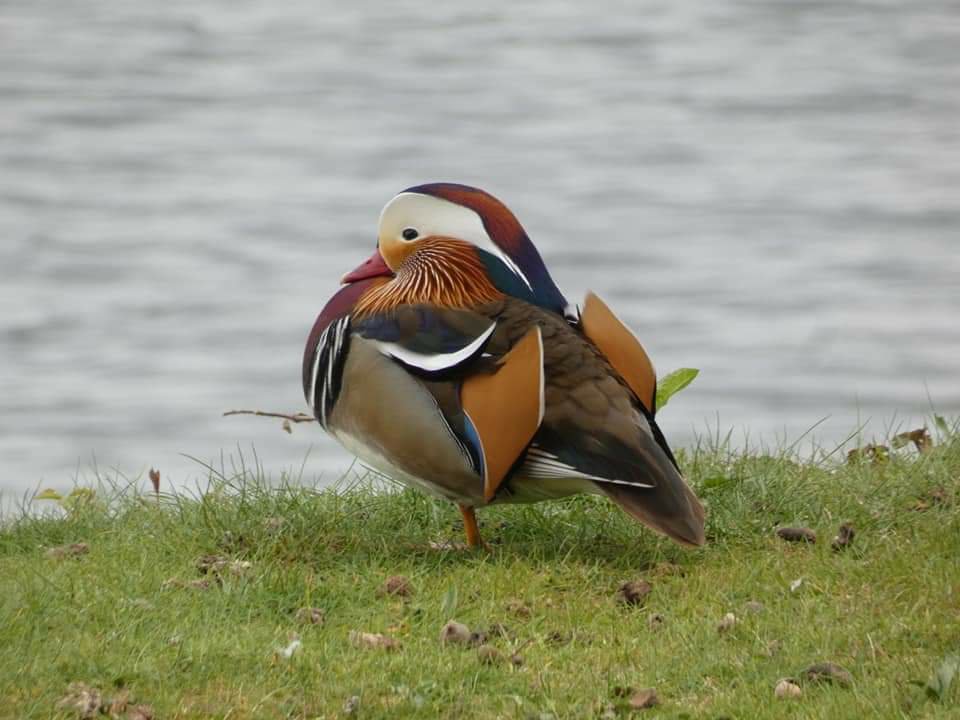
Here’s a few more pictures of birds we’ve seen recently.

Lee found this lovely lapwing at Lound lakes. Always a joy to see, they’re not as common as they used to be.
And finally, this robin in King’s park has a beak full of food – maybe for young ones!

Pure magic

Today we’re bringing you a selection of birds from around our local area of Retford and from our seaside home on the east coast of Yorkshire.
The above greenfinch was spotted by Lee in King’s Park, Retford, and he was able to get quite a few photos of this lovely bird. Greenfinches are lovely colourful birds, and can often be seen in our gardens, where they take advantage of any seeds and insects they can find.
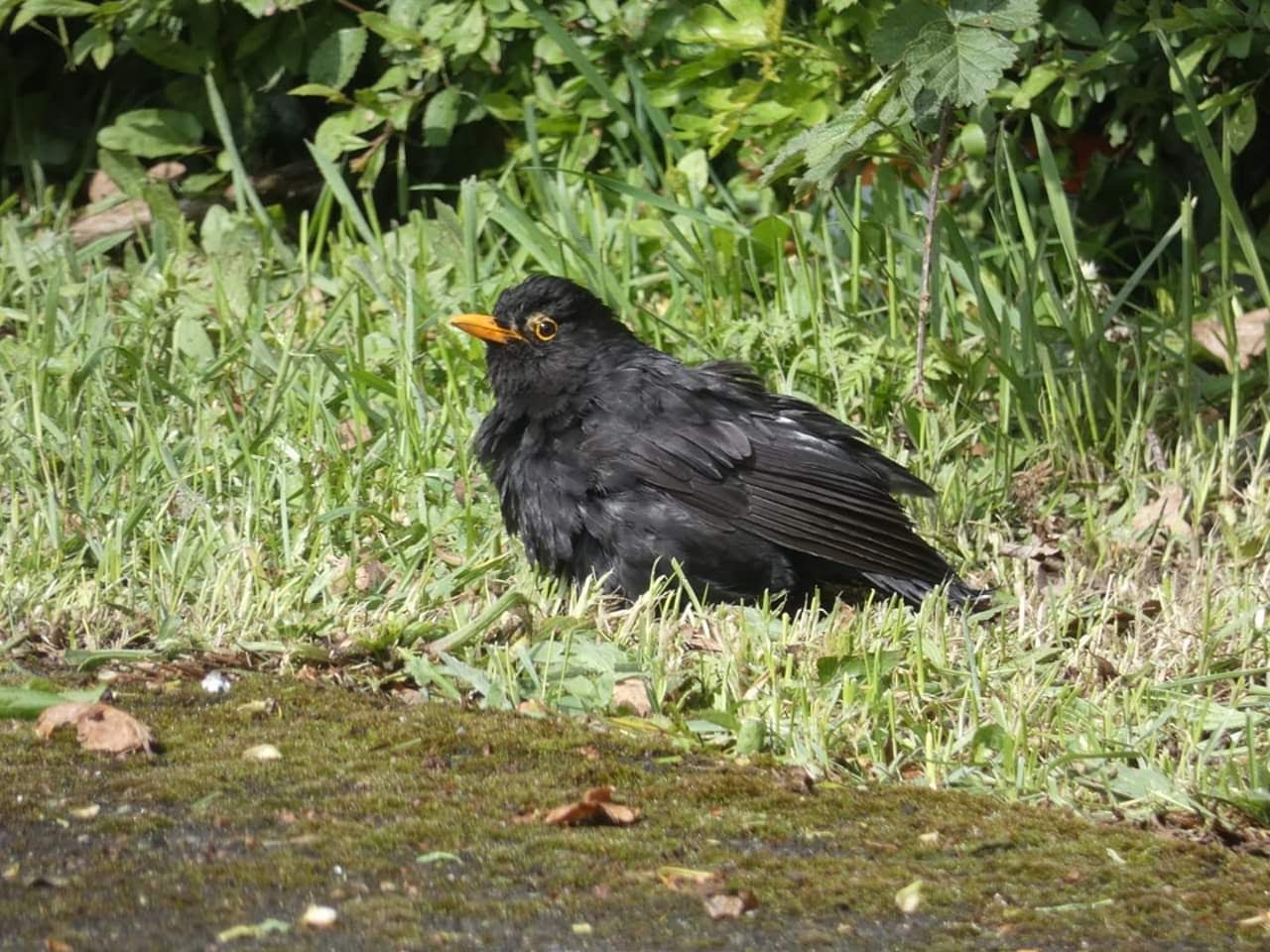
This beautiful male blackbird was sheltering from a heavy rain shower at Whisker Hills woods. Blackbirds can become quite vicious at this time of year, and will fight with other males to defend their territories and breeding partners.

The most special bird we’ve seen recently is this nightingale. We found it at Whisby Nature Park near Lincoln, where we were treated to its astonishing song, which literally stopped us in our tracks. We spent quite some time trying to see it and finally managed to capture a few photographs. Nightingales are unfortunately not as common as they used to be, and we believe that the small population at Whisby is the furthest north they get in the UK. We felt privileged to be able to stand and listen to it – a truly magical moment.
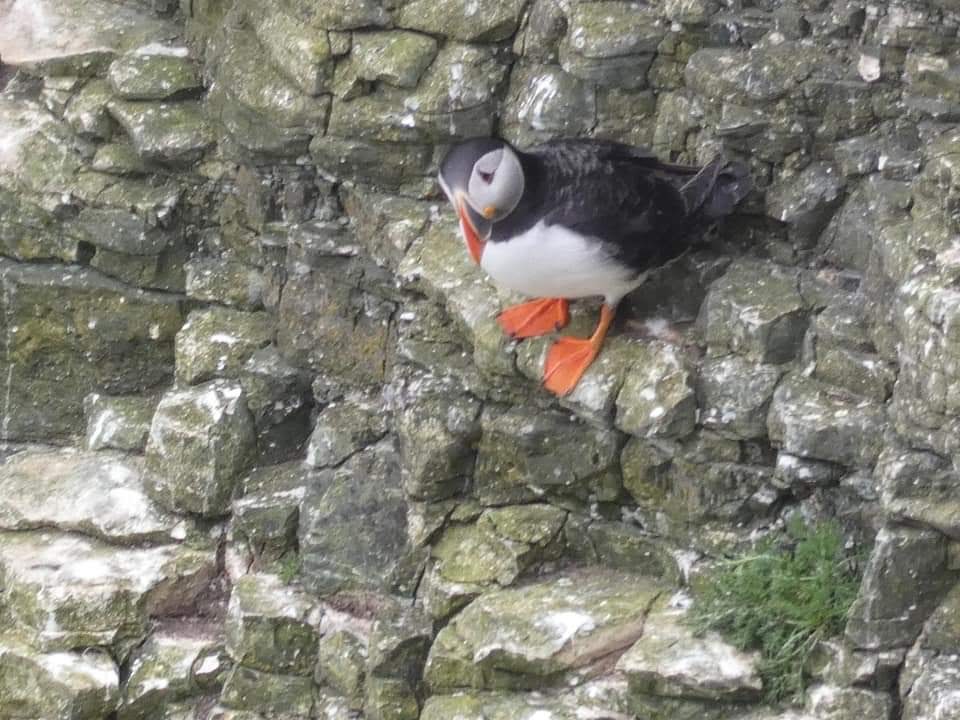
The rest of the birds we’ve brought today were all seen around our seaside home near Bridlington. We found this delightful puffin at Bempton Cliffs RSPB reserve, along with other seabirds such as gannets, kittiwakes, razorbills and guillemots. This one kept flying out to sea and then returning to the cliffs.

The beautiful short eared owl was also at Bempton. The quality of the photo isn’t brilliant as it’s quite heavily cropped, but again such a pleasure to witness this bird hunting on a cold afternoon.

Lee was also lucky enough to capture a corn bunting and tree sparrow in the same picture. There was a flock of around 50 corn buntings which we watched taking off into the air and then returning to the bushes around us.
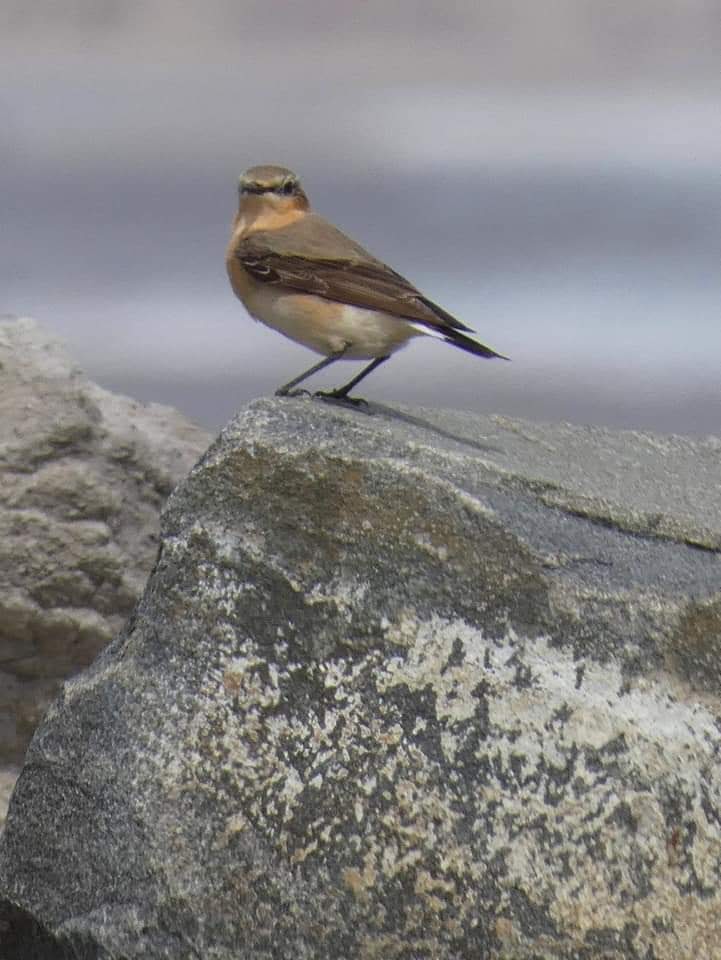
Finally, this fantastic wheatear was on the beach at Barmston. These summer visitors are not very widespread, so they are always a pleasure to see.
We’re hoping the weather’s going to improve now so we can get out and about more and find some more exciting birds. We’ve been listening to a lesser whitethroat down the River Idle for the past few days but it’s very elusive and so far hasn’t let us get its picture. Happy birding everyone!
